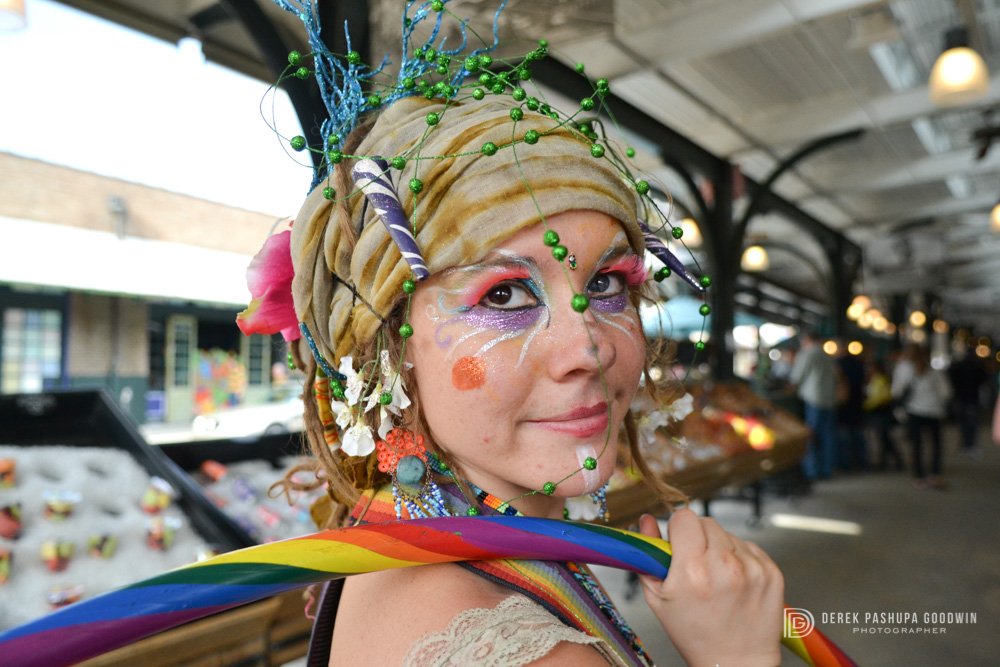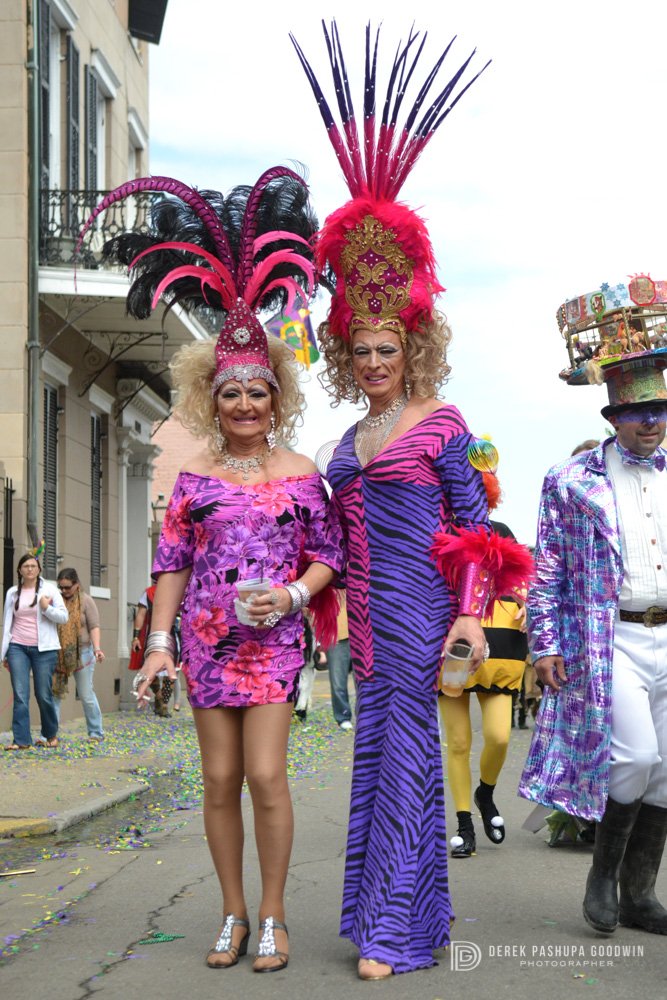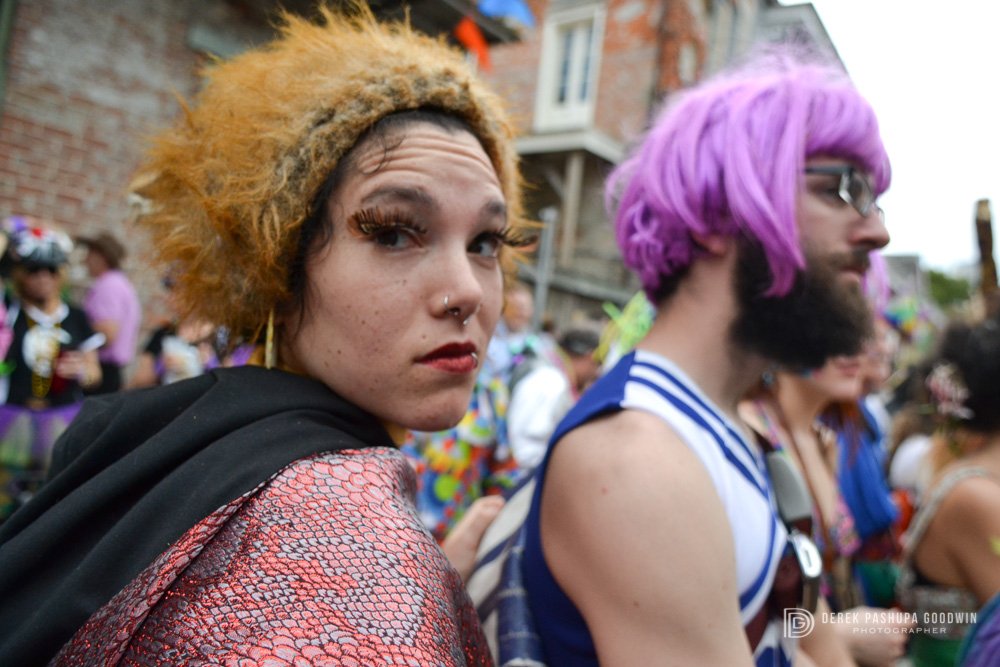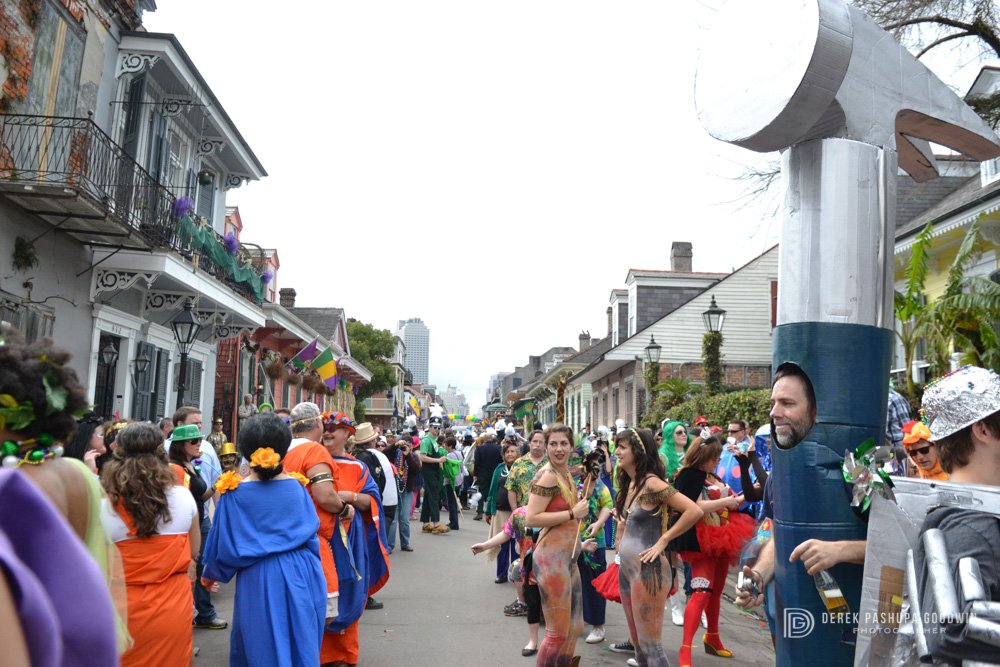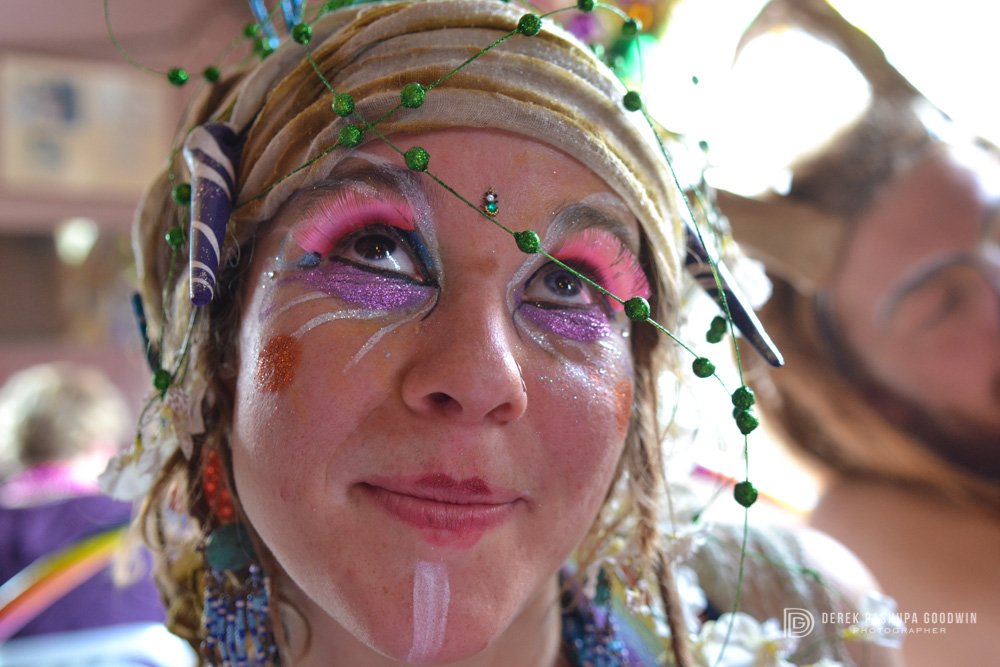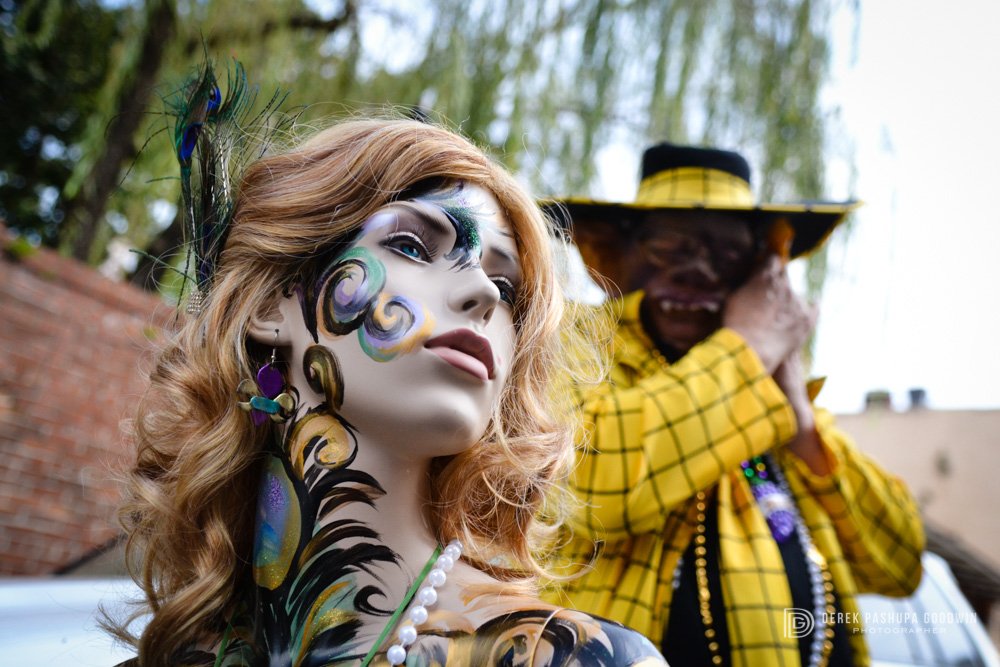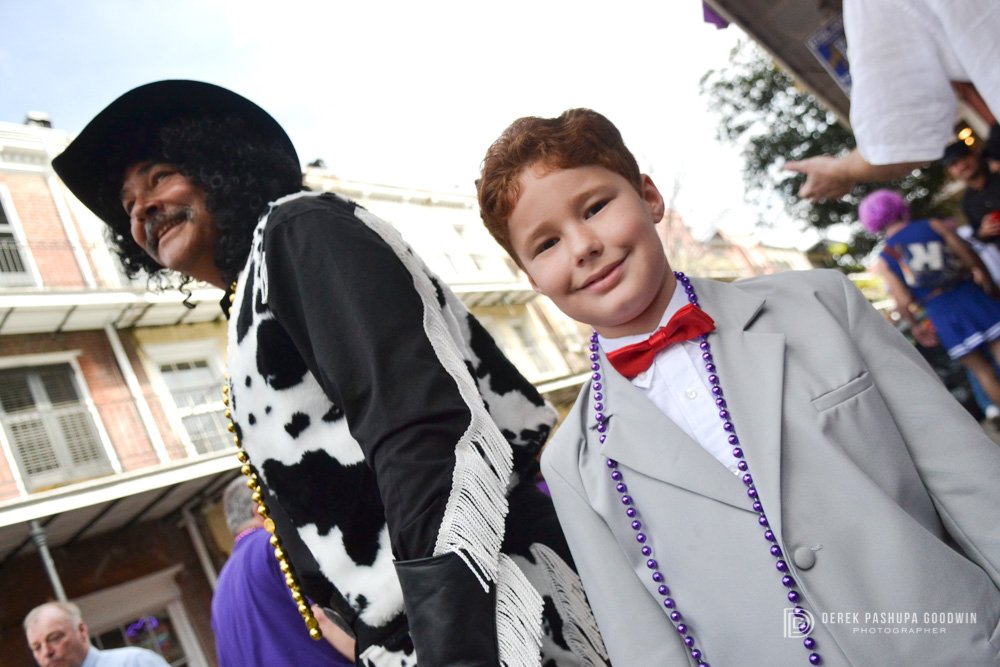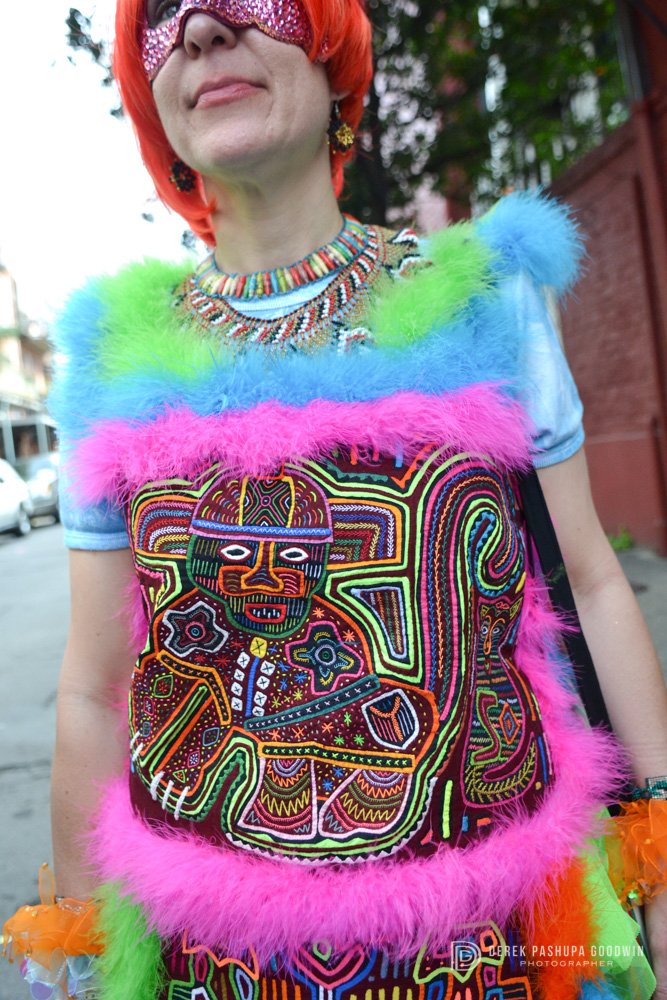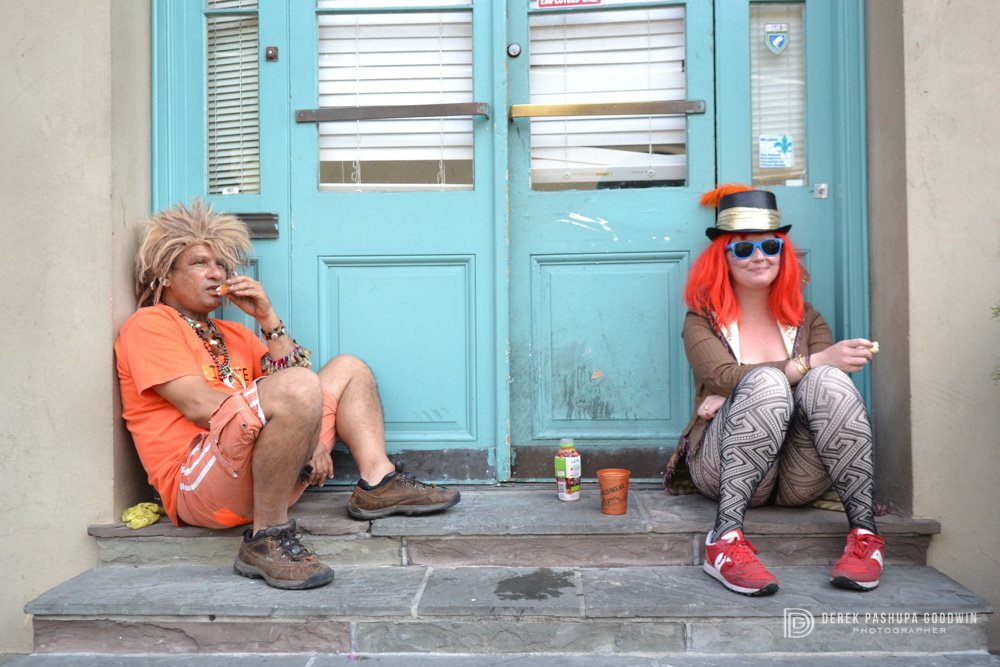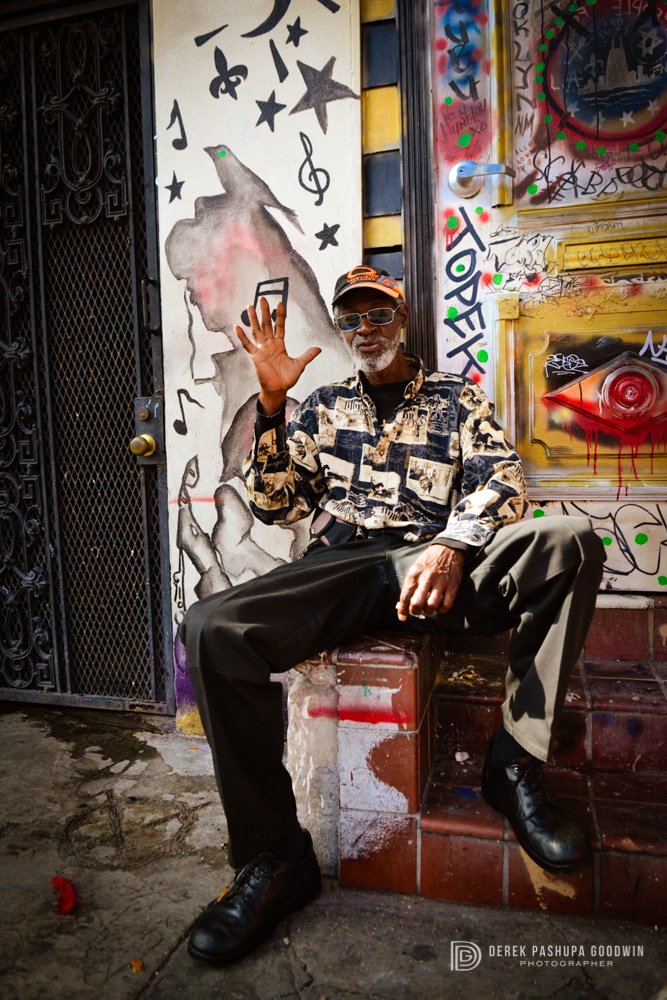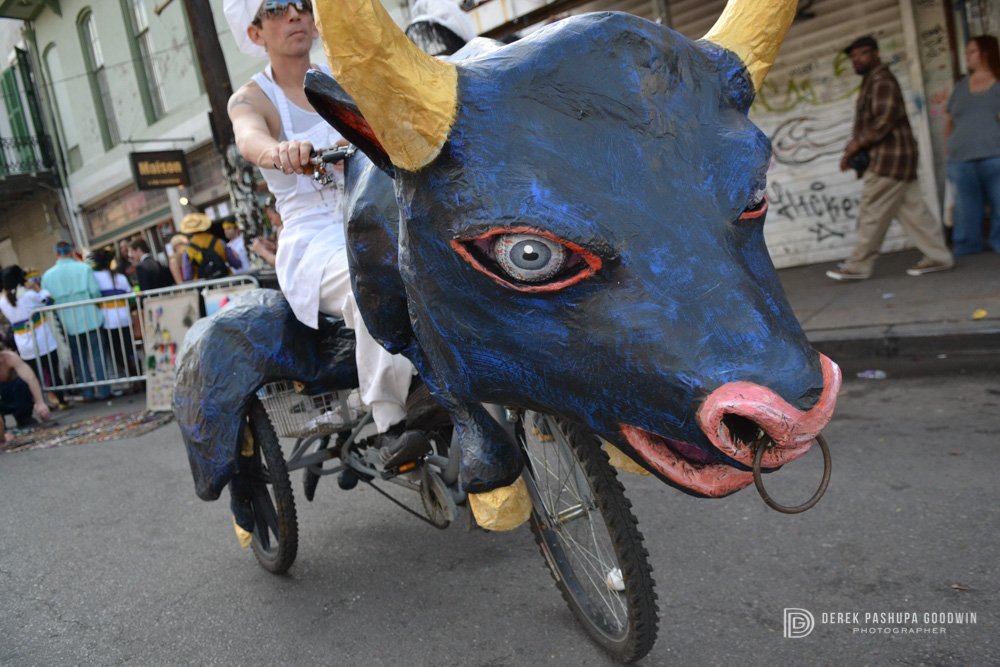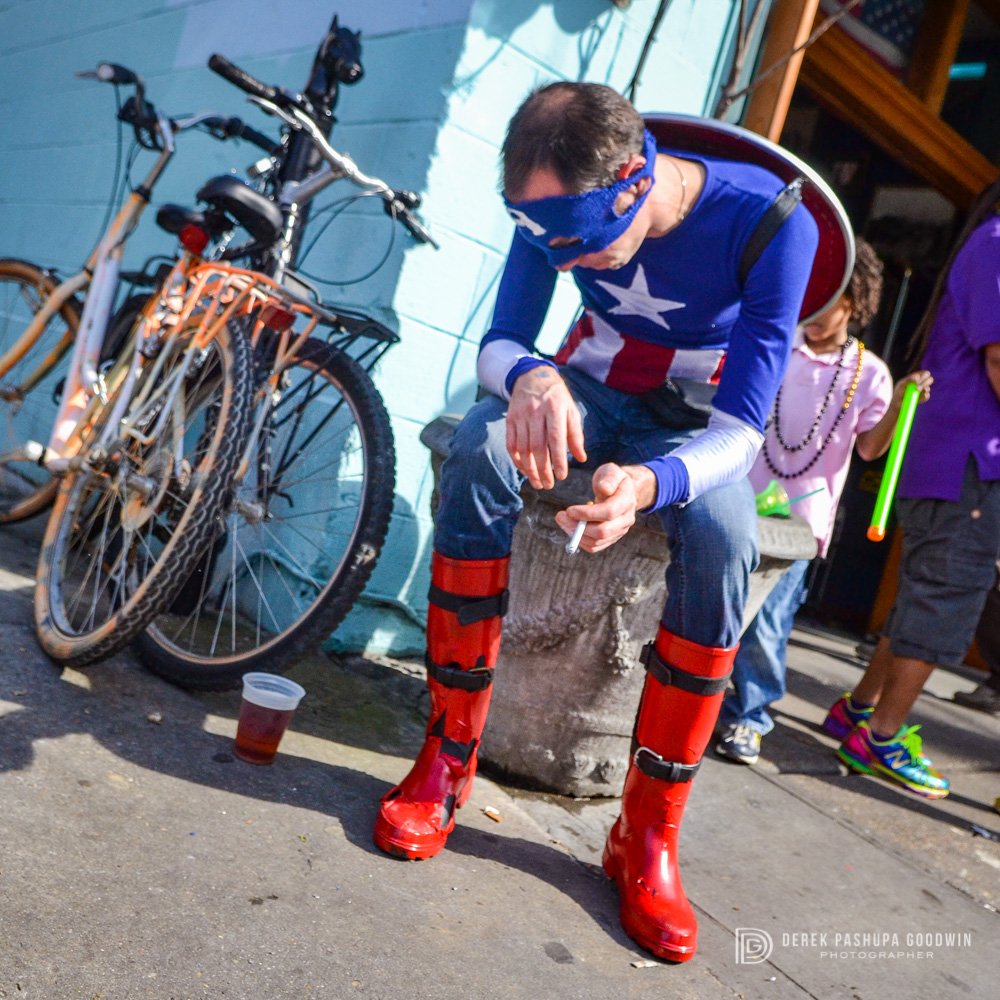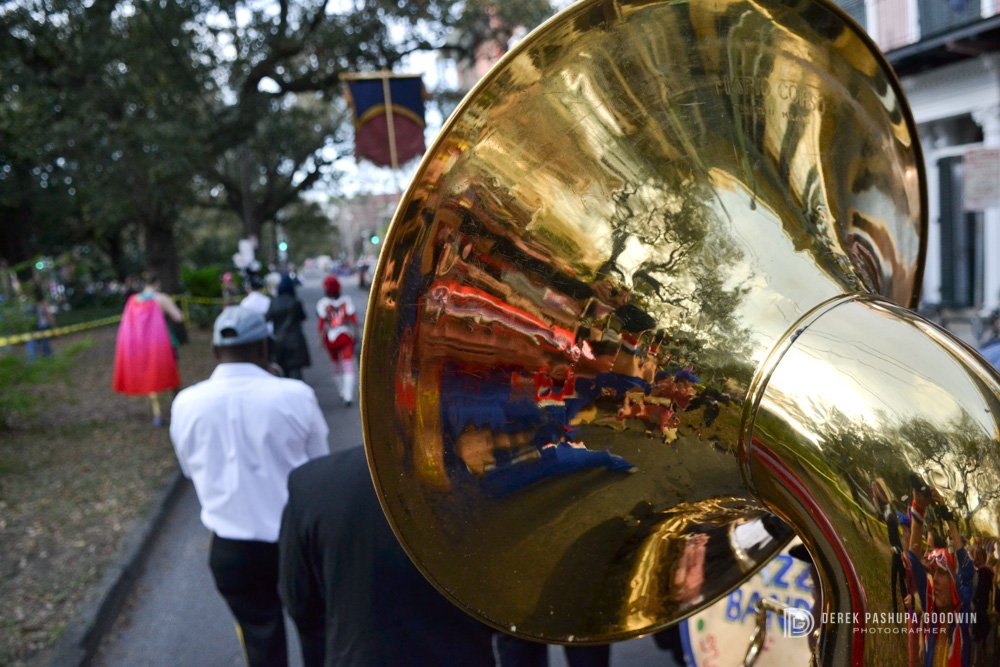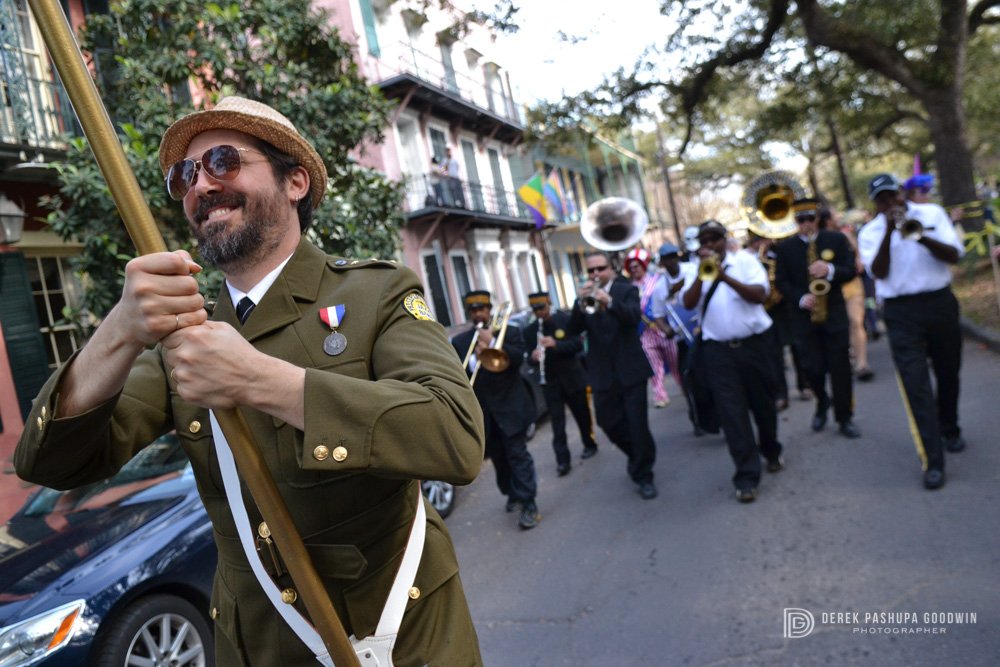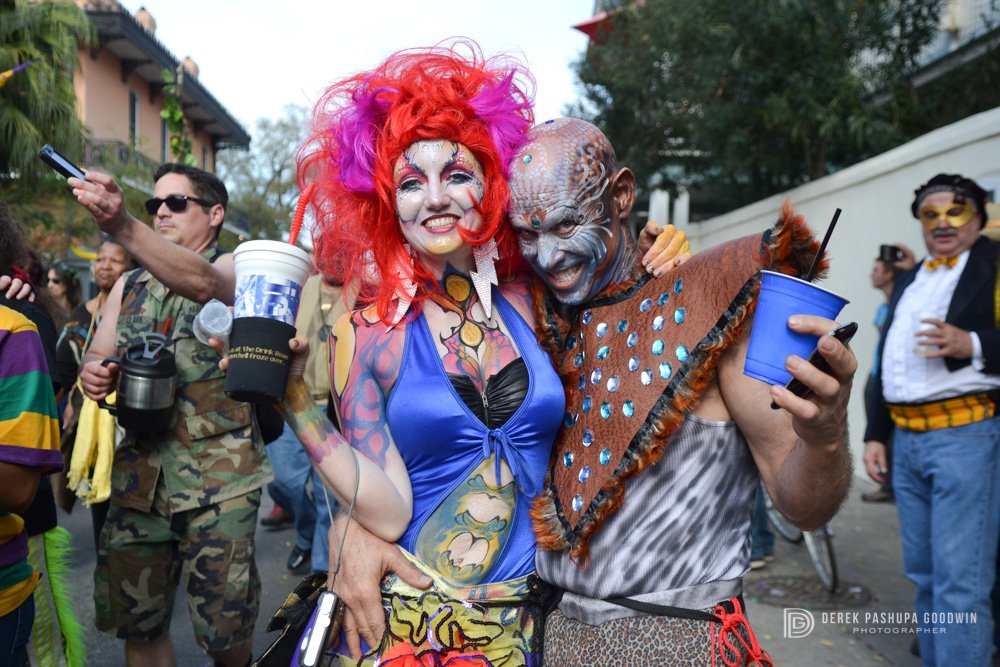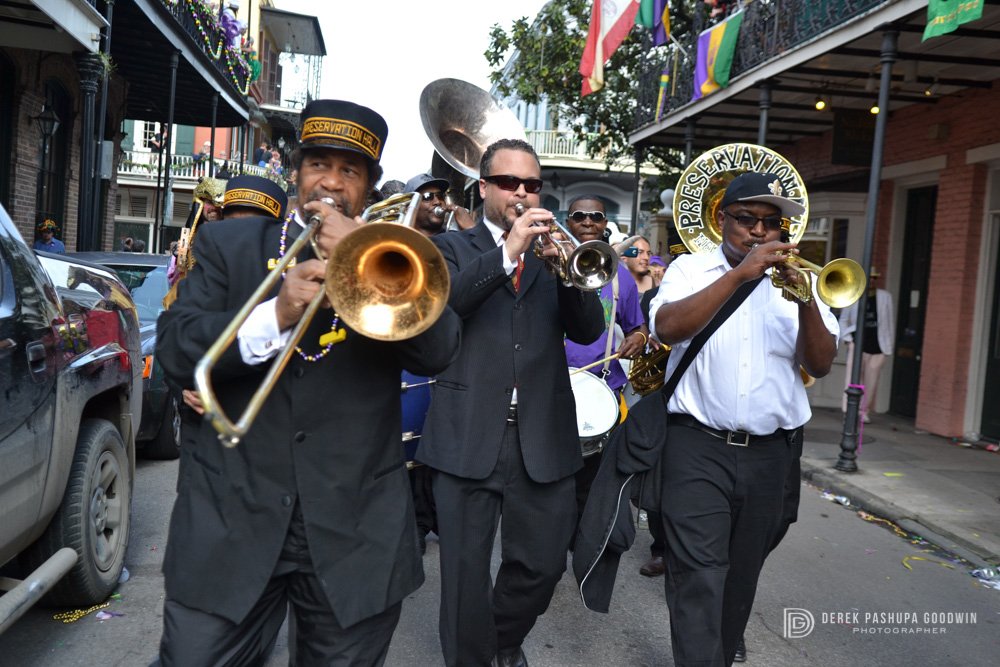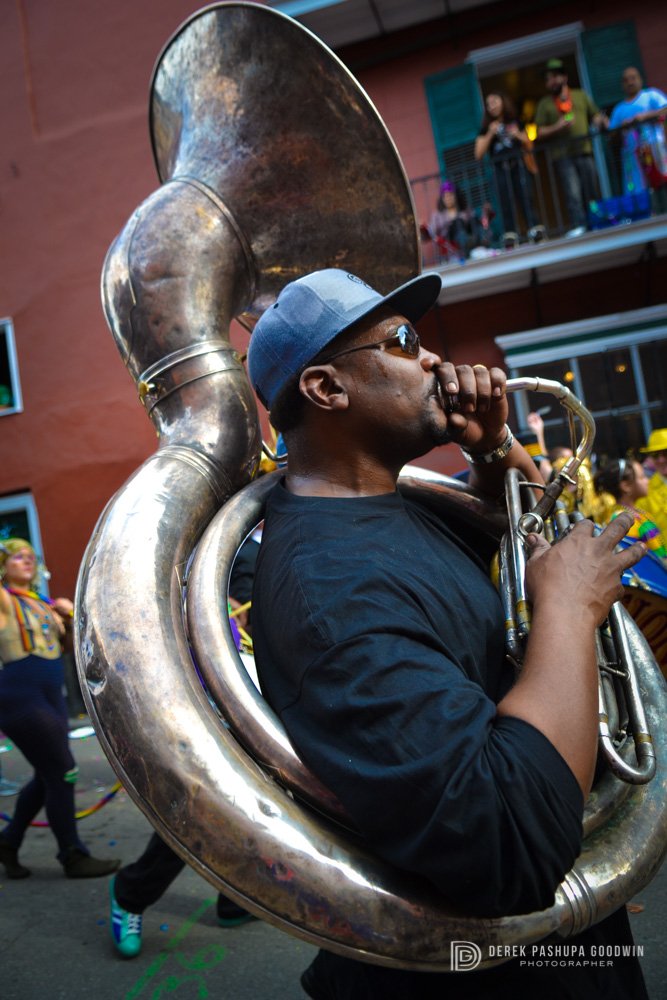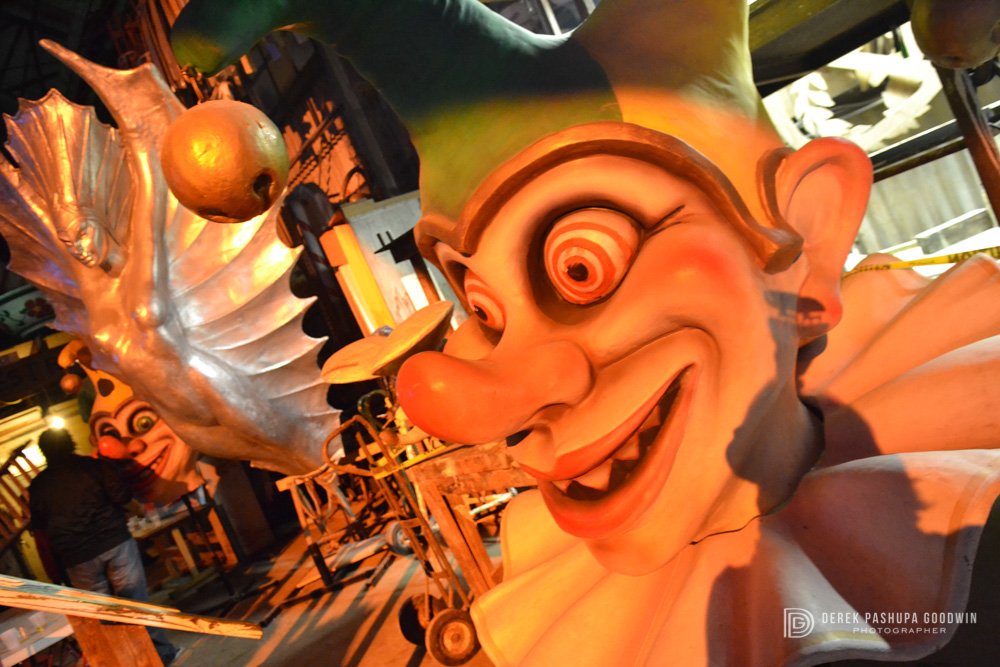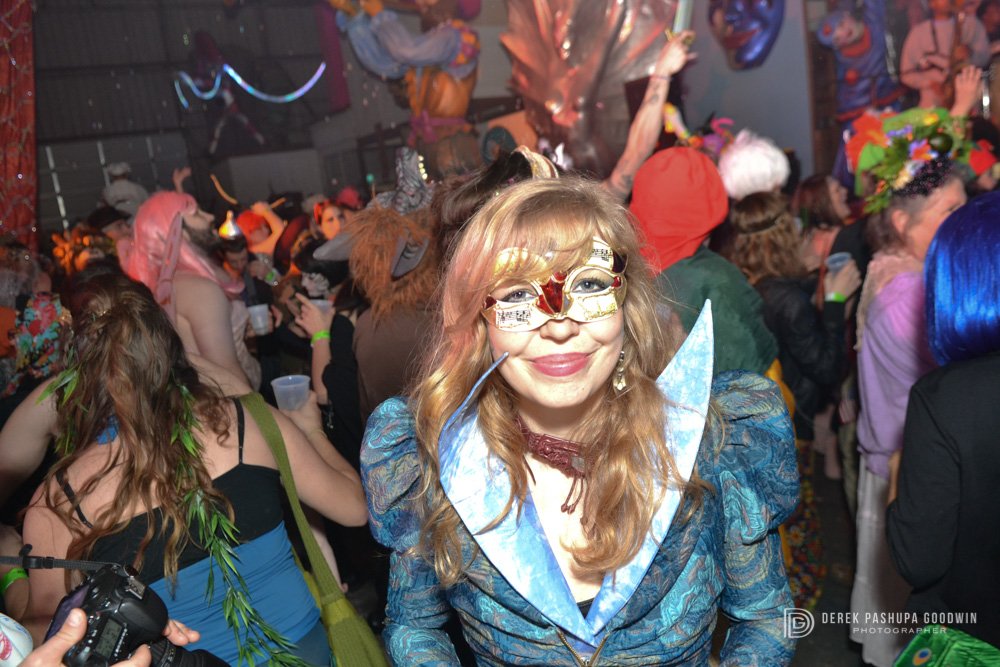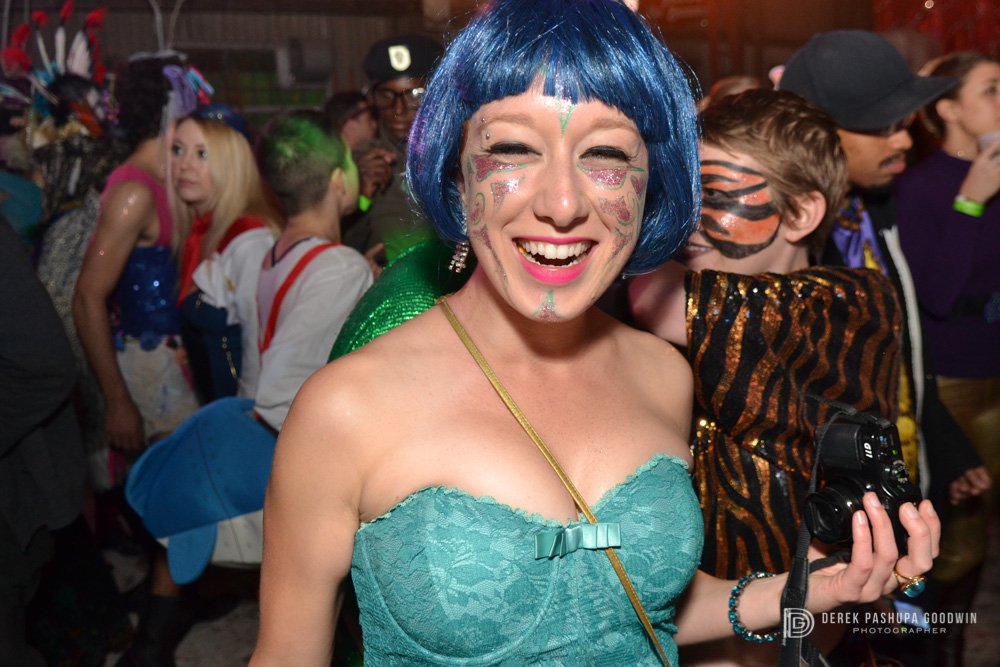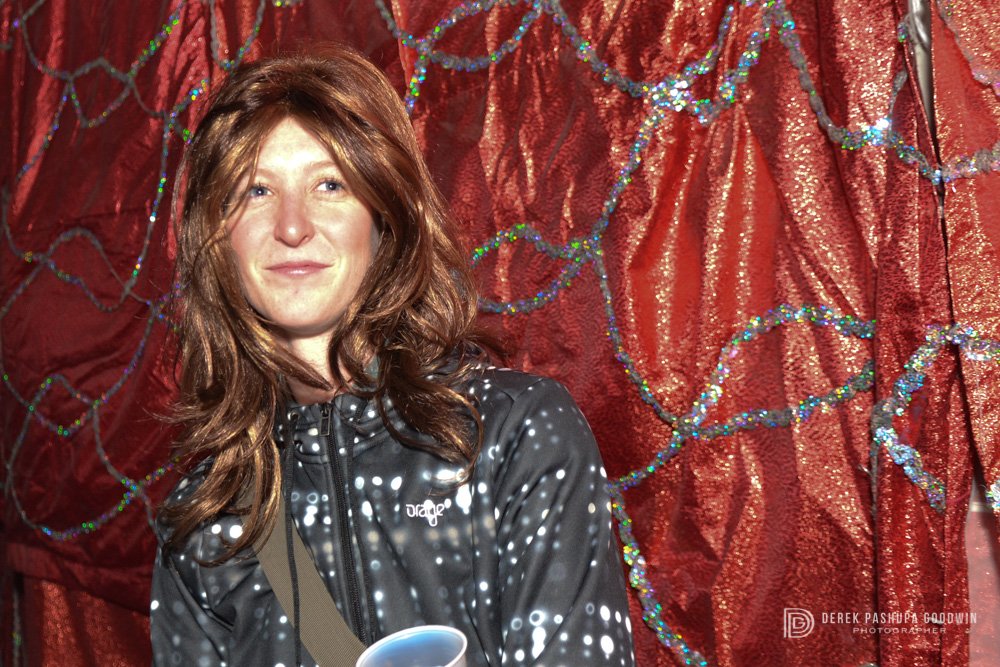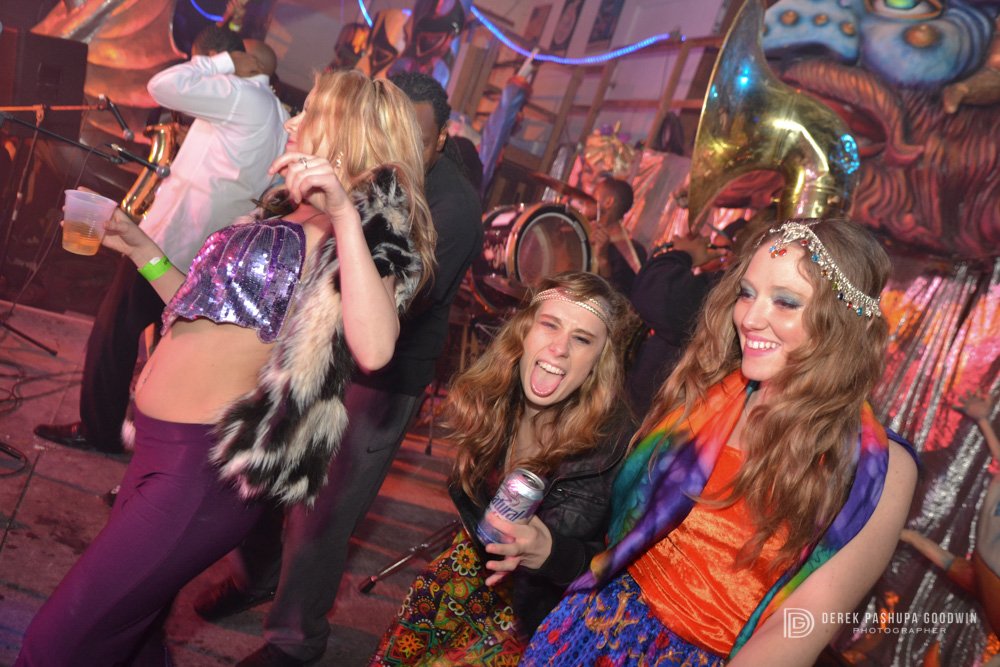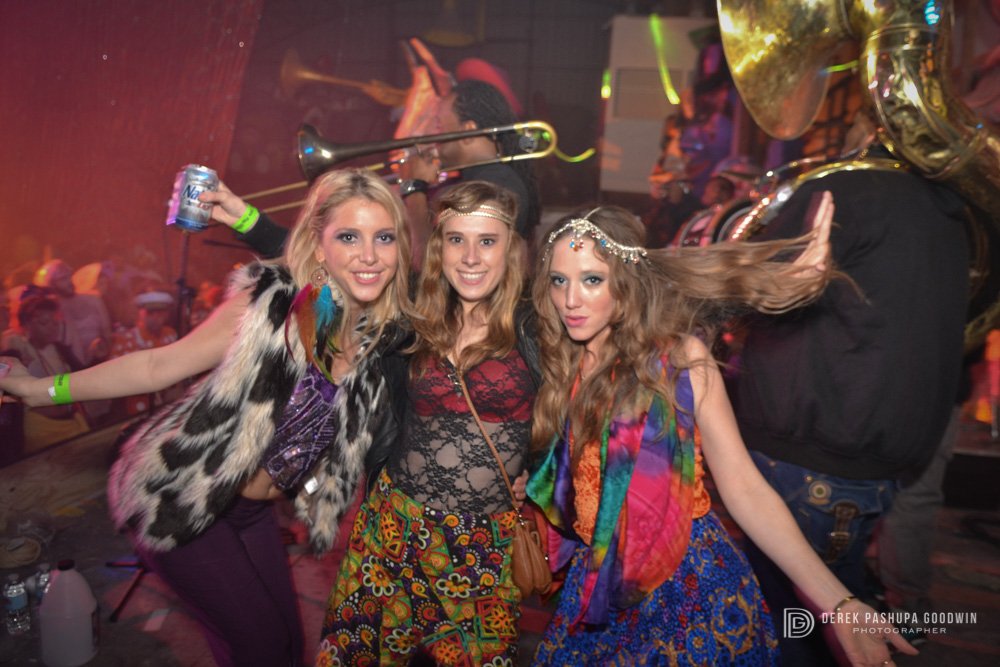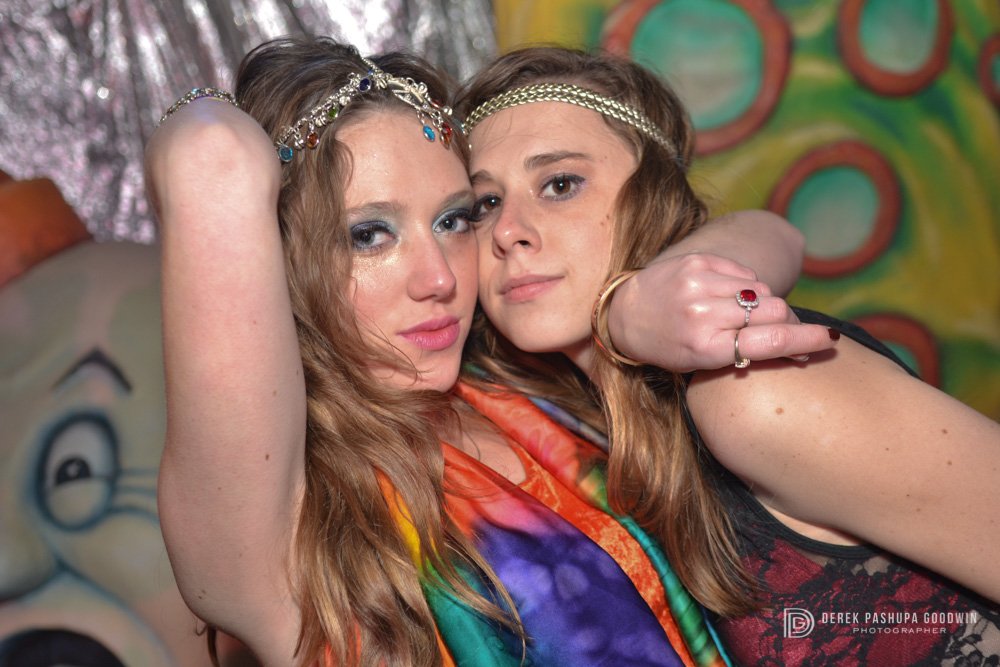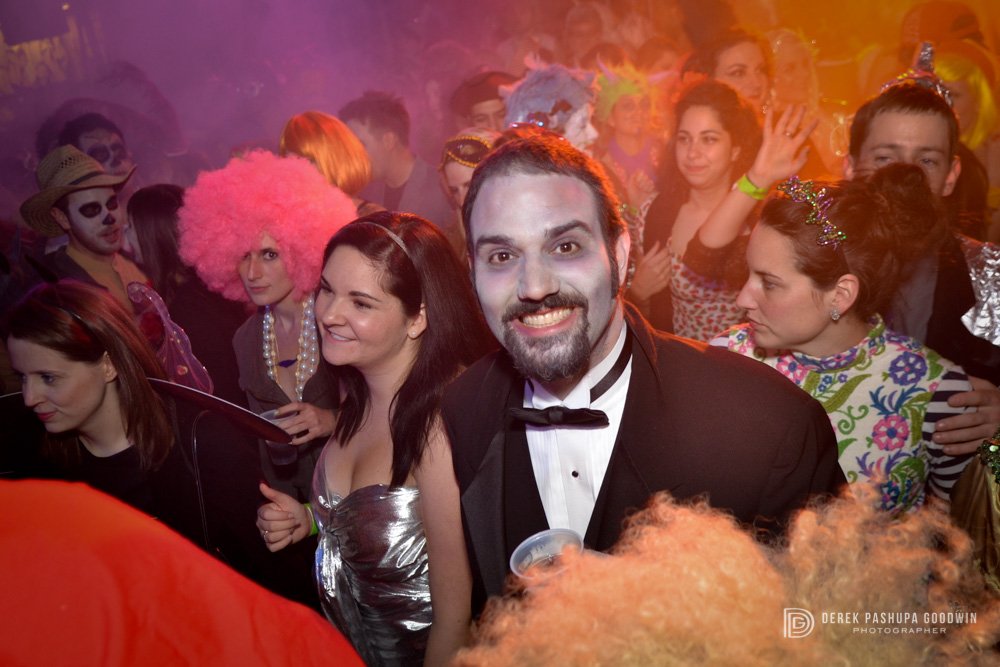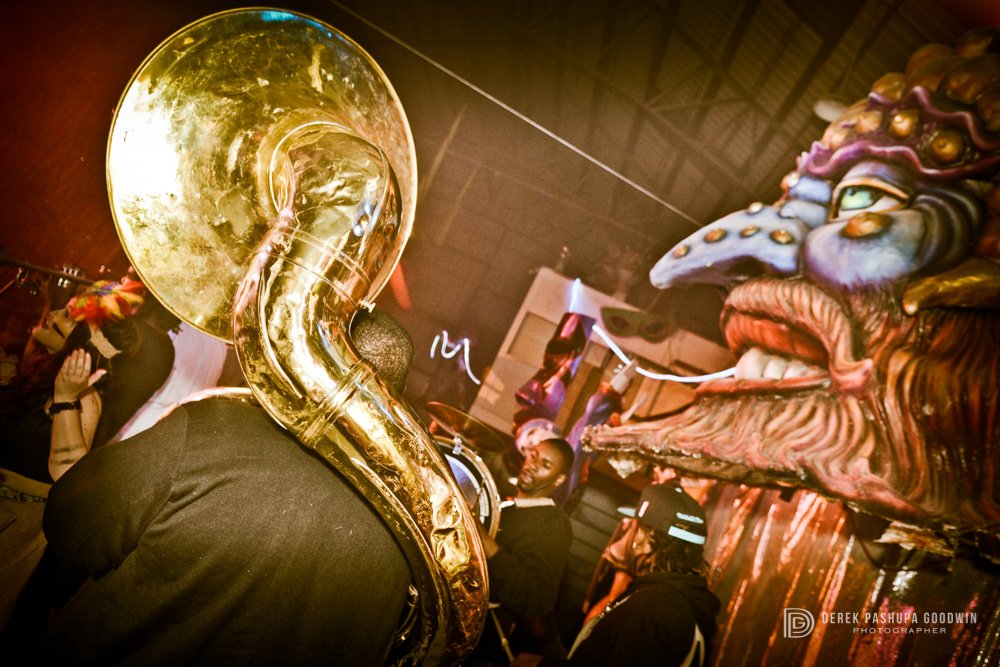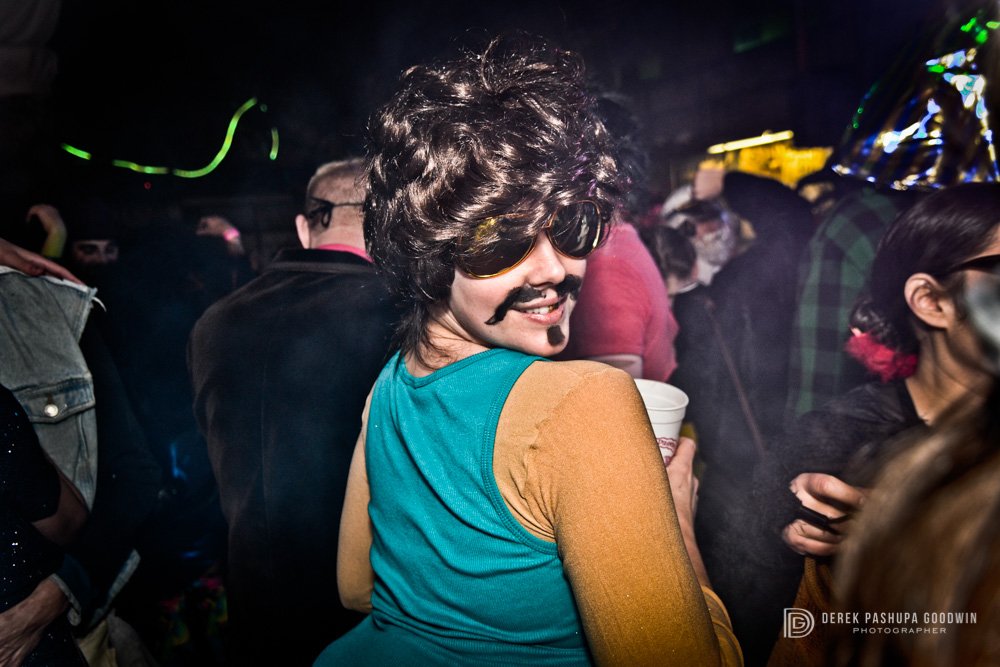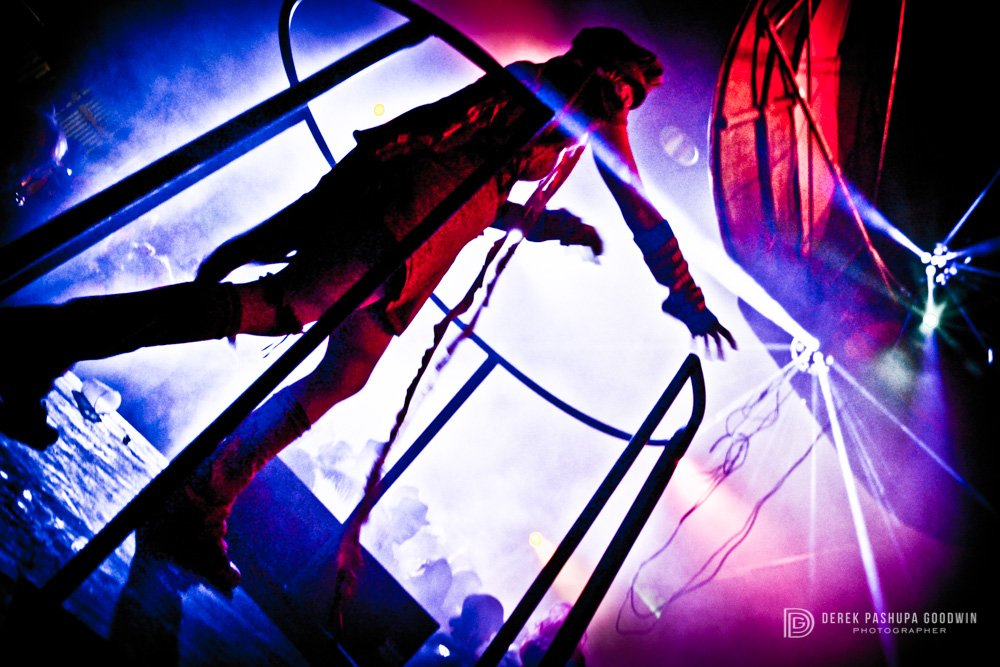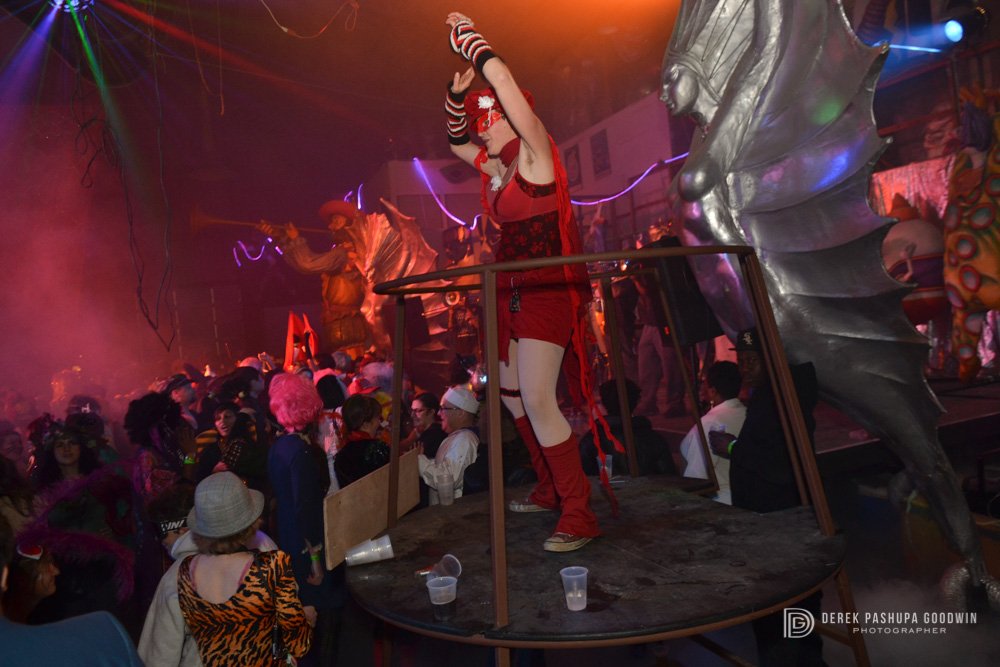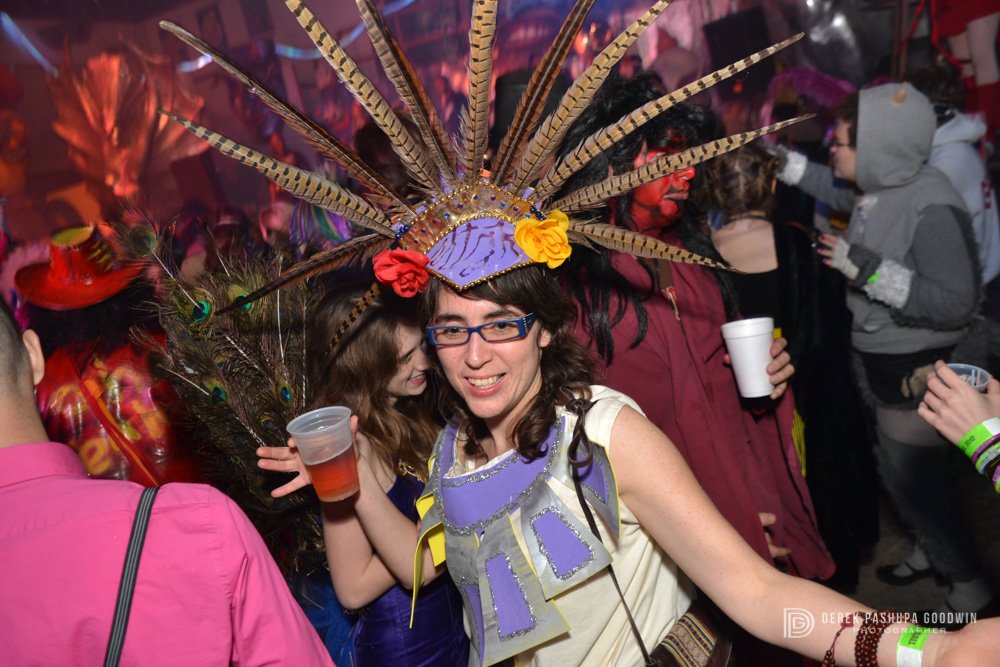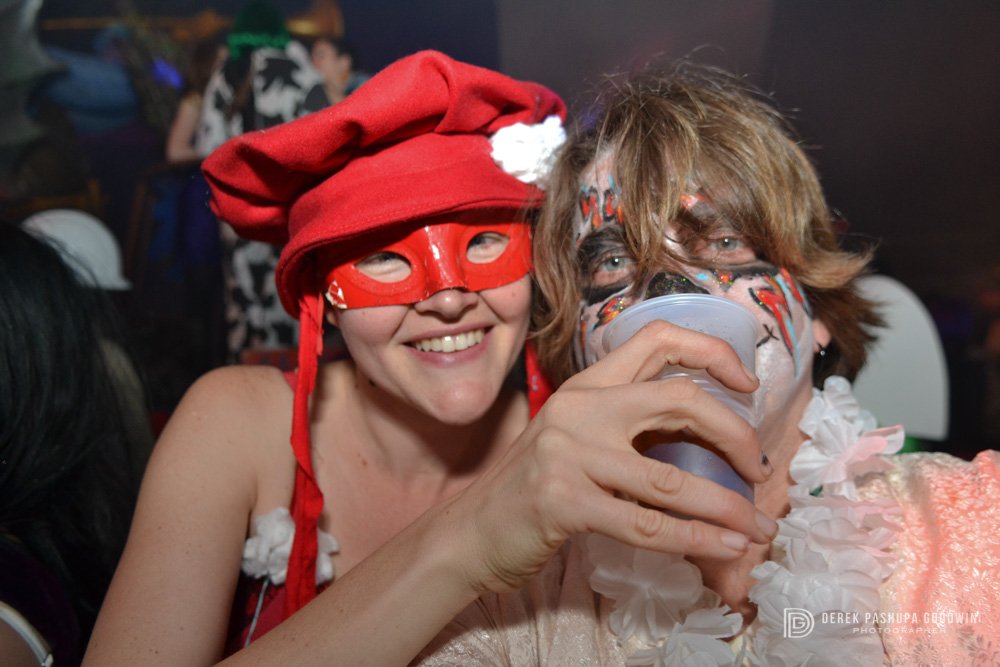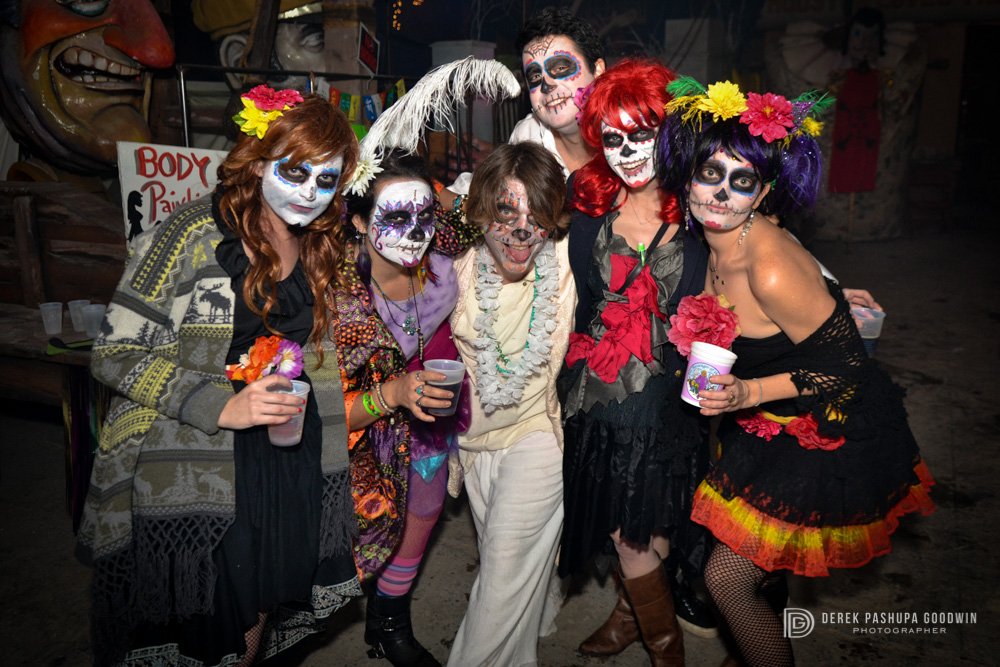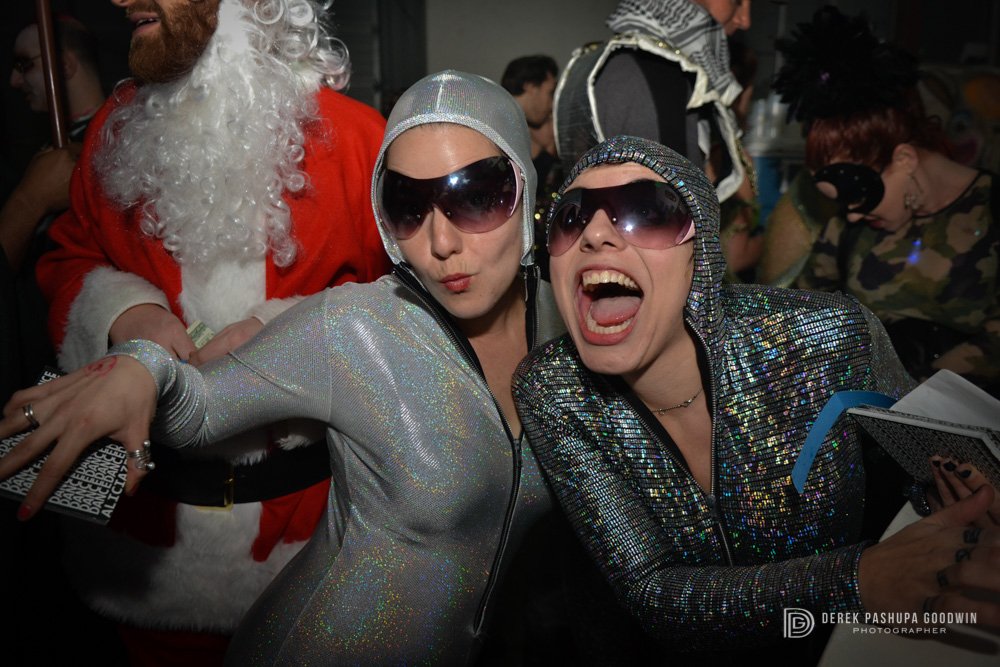Don't Forget Yoga! My Journey of Remembering.
Celebrating today’s launch of the "Don't Forget Yoga Podcast," helping new yoga teachers absorb yogic wisdom with music, mantras, and mnemonics. This post tells the story of my journey as a yoga teacher who struggles with memory, the mnemonic systems of music and wordplay that I developed to help me remember things, and the vision I have for helping other yoga teachers with the podcast.
Stay present, but don’t forget the past, and don’t forget the future! For me, it’s all about not forgetting yoga.
In the spring of 2011 I found myself at the Omega Institute in upstate NY, sleeping in a tent, and spending twelve hour days immersed in the Jivamukti Yoga Teacher Training, along with 118 other students from all over the world.
In the months leading up to the training yoga had helped me heal from the worst breakup of my life, while creating a sense of ease in my body, and peace in my heart. I found Jivamukti Yoga in New Orleans at the Swan River Yoga studio. It was one of the most respected lineages of yoga, influencing much of the vinyasa yoga teaching that we see in the world today. I loved the way it included the chanting of mantra, an exploration of Hindu philosophy, a call to be kind to animals, and a very challenging method of asana practice. I was hooked.
My desire was to become a teacher so that I could pass this gift on to others. I marveled at how my favorite yoga teachers seemed to effortlessly teach classes that opened my heart physically, mentally and spiritually. It was like magic. I wanted to be that kind of magician.
Now I was in the thick of the training, and realizing the amount of information expected of a yoga teacher was daunting. We had experts in anatomy and Sanskrit come teach 3-day modules that barely scratched the surface of those disciplines. In addition, we were studying the Yoga Sutras, Bhagavad Gita, Haṭha Yoga Pradipika, dozens of mantras, vinyasa sequencing, yoga assists (huge in Jivamukti), meditation, creating themes for classes, and more. It was overwhelming!
How could I possibly remember it all?
Teaching yoga is not as easy as it looks!
At the end of 2011, 300-hour yoga teaching certification in hand, I migrated back down to New Orleans for the winter. I was blessed to be asked to teach at Swan River. I took advantage of the fact that all of the teachers were taking a week off for the Christmas holidays, and got permission to teach one class per day during that stretch.
In those halcyon days of my teaching I did not worry so much about how many students showed up, but I had lots of anxiety about being able to give the ones who did a great experience. I had serious imposter syndrome. There was so much to remember in each class! The class theme, the sequence, the names and anatomical foundations of the poses, the names of students, etc; I would look out at the student’s faces, and no one would be smiling. I perceived each serious student face as a personal failure. Shouldn’t they be smiling?
Over that week I worked through my insecurities. There was a student named Sara who kept coming back. She wasn’t smiling, either, but she was consistent. She was my lifeline. This was helping someone, even if it was because I had the only class on the schedule. Yet after the other teachers came back, Sara still came to my class. I still feel so much gratitude for her.
My brain is not a fried egg, but I might have scrambled it.
My momma talkin' to me tryin' to tell me how to live. But I don't listen to her 'cause my head is like a sieve. ~Cheech & Chong’s ”Earache My Eye”
About the time that Cheech & Chong were at the peak of their popularity, I was a teenager smoking way too much pot. First Lady Nancy Reagan’s “Just Say No” campaign and the this is your brain on drugs commercials only made me want to smoke more. It was obvious to me that the dangers were being overstated, and I would neither become a heroin addict, nor the stinky part of a breakfast sandwich. I just wanted to fit in with the cool kids who hung out in the woods behind my house.
If I could, I would go back and say to that younger self, “hey buddy, wait until you are in your twenties.” Science is finding that pot is not good for the developing adolescent brain. I don’t know if it was the weed I began smoking regularly at 15, or just the brain I was born with, but now I have a really hard time remembering things.
I forget faces, for example, a mild and self-diagnosed case of prosopagnosia (facial blindness). It happens when I see someone I know in a place where I don’t expect to see them, like seeing a yoga student at a hat store. They will start talking to me and I will be frantically trying to figure out how I know them, and why I am in a hat store.
Of course I forget names easily, which is more common. I forget large swaths of my life; friends tell stories about me that spark no memory. I forget the details of almost everything I read. I forget the dialogues in movies. My mind truly is like a sieve.
For most of my life I have been very self-conscious about my memory. I use humor and wit as the smoke and mirrors that disguise my memory deficits. I lean heavily on the parts of my brain that work better. I have good pattern recognition and excel at puns and rhymes. I am intuitive with placement of objects in space. I am a great listener, and don’t get annoyed by people who tell the same story over and over. It’s all new to me.
Knowing all this, it is no surprise that remembering all of the intricacies of a yoga teaching practice is a challenge.
The song that began my journey of remembering.
In the United States we just can’t help ourselves. As much as most of us hate standardized testing, it is still a model that most educational systems use to validate a student’s progress. The Jivamukti Yoga Teacher Training was no exception. We had a written portion of our final exam that we needed to pass in order to be certified. My ally in the quest to conquer the test turned out to be the ukulele that I carried around with me everywhere I went.
One of the skills that I have developed in the place of memory is the ability to make up songs about whatever is going on around me. And so it was that I wrote my first mnemonic song, the Shatkarma Kriya Song. The Shatkarmas are six yogic techniques to purify the body, outlined by Svatmarama in the Haṭha Yoga Pradīpikā. We all knew they were going to be on the test. I played the song for a couple friends, and soon I was playing it for little groups of students wherever I went. I was on to something! Music helps us remember.
Here is the song I wrote to help remember the shatkarmas:
(My friend Helida recorded this video in a canoe the day after the test)
Without going too far down the shatkarma kriyas hole, here is a quick overview:
There is a lot more to know about the shatkarmas than the one-word descriptions in my song, but single words can remind us of larger concepts. They are the seeds for memory.
Dhautī is washing the digestive tract.
Basti is cleansing the colon.
Netī eliminates mucus from the sinuses (using a Neti Pot, for example).
Naulī is churning the abdominal muscles.
Trāṭaka is fixing the gaze, most famously by staring at a candle’s flame without blinking.
Kapālabhātī is a breathing technique that “shines the skull.”
Agni Sara, literally fire wash, is a pranayama technique that purifies the organs of the abdomen.
The yoga of memorization
Thousands of classes later I am an accomplished yoga teacher. I have learned to manage the challenges of remembering. My best classes are journeys that begin with my harmonium and chanting of mantras. We then flow through philosophical themes, storytelling, playful sequences, anatomy tips, and demonstrations.
My advice to new yoga teachers. Be humble. We can’t be everything to everyone.
Svādhyāya, besides being fun to say, is the Sanskrit word for self-study. It’s the key to success in business and in life. Trying to see ourselves clearly is really hard. I didn’t want the world to know I have a hard time remembering things. To my ego, it feels like admitting I am stupid. Yet wisdom and intelligence take many forms, and we all are wise and intelligent in our own unique ways. Understanding what those qualities are, as well as our weaknesses, is svādhyāya.
The clarity that comes from self-inquiry is useful. It is useful to know what we are passionate about in the yoga realm, and who we want to serve. Then we can stop putting energy into learning the things that don’t serve our mission. If your goal is to teach trauma-informed yoga, then perhaps learning the Sanskrit names of the poses are not as important.
I personally love beginner to intermediate-level vinyasa, chanting mantras, meditation, and yoga philosophy. I don’t spend much time learning the gentler forms of yoga; yin yoga, restorative yoga, chair yoga, trauma informed yoga, yoga nidra. I am also not obsessed with doing complex arm balances and super advanced asana. Those are all incredible practices, and I have some familiarity with all of them. But I actively pursue deepening my knowledge in the forms of yoga I am passionate about. If a student wants something different, I refer them to another teacher who can help them.
Cutting out the parts that don’t serve me, there is still a vast ocean of knowledge I immerse myself in. To help me navigate those waters, I have developed a strategy of remembering.
Mnemonic Methods of Mastering Memory (mmmm…)
Decide if it’s worth remembering. Use svādhyāya to ask yourself if something is truly worth putting extra effort into remembering. I think of my brain as a hard drive with limited space. If it fills up with spam then there is no room for important data. I enjoy dad jokes, but I don’t really want to spend my precious time remembering them.
Establish a connection to something already remembered. Our brains create neural networks that strengthen over time with use. This is helpful with remembering names, for example. When someone tells me their name, I will think of other people with that name, or something it reminds me of. Connecting a visual image is powerful here. If you meet someone named Matt, imagine them rolled up into a yoga mat. Let them go when you get to your next yoga class.
Use wordplay mnemonics. I love words. Rhyming, acronyms and alliteration are all great tools. Music is the most memorable way to remember for me. If there is a song that has a chorus I can swap out words with, it is very helpful.
For example, I had a hard time remembering how to pronounce “mnemonic,” because the ‘m’ at the beginning would trip my mind up. I began practicing the mantra “Kali Durga Namo Nama” by chanting “Kali Durga Namo mnemonic!” Now I say mnemonic the right way most of the time! Kali helped me overcome the demon of mispronunciation!Through repetition, the magic will rise. My teacher Sharon Gannon loved to tell us this. She said it so often that I easily remember it. The more we repeat something silently or out loud, the more likely we are to remember it. But remember, it takes time.
We have all studied for an exam using flashcards. This is a type of repetition that is helpful. If you are like me, most of the facts and figures you crammed into your brain like that have probably slipped back out. The element of time is the other important factor. If you circle back regularly to those flashcards, or to your journal, or to a book you love, and remind yourself of the facts and figures, you are more likely to remember them in the long term.
The transformative power of remembering
After my teacher training, I got a job orking at the Jivamukti Yoga Center in NYC that lasted for six years. During that time, there was a teacher there whose classes were always full, in a room that held over 75 yogis on their mats. Her name is Rima Rabbath. She has great dharma talks and her vinyasa sequences are imaginative and challenging, but not more so than the other Jivamukti teachers who taught there, who had smaller followings. There was one thing that I noticed about her that really set her apart. She remembered everyone’s name.
Because there were so many people in her class, the first part of the class was spent moving mats around (fortunately she had assistants helping her). Whenever a new face came into the room, she would ask them their name, and repeat it back. She would find out who they knew, how they got there, making connections. At some point in the class she would say their name again, giving them encouragement. She would mention lots of people during the class. In a sea of students, we were each made to feel special. Even if it was our first time there.
“I’ve learned that people will forget what you said, people will forget what you did, but people will never forget how you made them feel.”
-Maya Angelou
As I evolve as a teacher, what is most important to me is that I give my students an experience. I want every class to be a journey. It begins with letting them know that they are part of the journey, that I remember their name. When we are meeting someone, we often get overwhelmed with the emotions they spark, and their name sometimes slips through. So the yogic practice of breathing and being present is powerful. Remembering names will revolutionize your teaching practice, especially when it’s a student’s first class and they are deciding whether they want you to be their teacher.
All of the great yoga teachers I know have their own unique method for teaching. If you pay attention, you will notice they repeat themselves. The repetitions will show up in their alignment cues, the philosophy they share, the way they pronounce Sanskrit words, the themes they choose. I used to see this as a personality quirk, but know I realize it is a sign of mastery.
A great teacher follows their passions and leaves out the parts of the practice that don’t serve them. Through repetition they create an experience for the students that is reliable and that becomes familiar and comforting.
By letting go of trying to remember everything, I have become better at remembering some things quite well. I use all of the tools in my Mnemonic Methods of Mastering Memory toolbox to help me.
I use it to plan my classes. I can now tell stories that continue throughout the class, so that the climax of the story happens around the time the students are moving into the peak pose. I can connect elements of philosophy to specific poses, or parts of the story. I have songs about anatomy that help me remember muscles and their connections to bones.
Being able to manage memory, and apply it to your teaching practice, is powerful. I have been able to overcome imposter syndrome by realizing that I have lots of gifts and wisdom that I can share. I have befriended with my brain's limited capacity for memory, and instead of seeing it as a handicap, I see it as the catalyst for this unique journey I am embarked upon with mnemonics.
I have even gotten much better at remembering students’ names, and can usually get them to smile when I mention them in class. To be yogic about it, their smile and mine are one and the same. I wish the same for you.
The Don’t Forget Yoga Podcast
If you are a new yoga teacher who struggles to remember all of the aspects of teaching, check out my new Don’t Forget Yoga Podcast, helping new yoga teachers absorb yogic wisdom with music, mantras and mnemonics. I will be diving deeper into all of the ideas mentioned in this blog post, and talking to other teachers and memory experts along the way. I hope you will join me on this journey!
Conspirituality, Duality, and Reality.
The Covid era has brought us conspirituality, a neologism describing the overlap of conspiracy theories with “new age” spirituality. The algorithms of A.I. are pulling us away from the center, into our thought bubbles and alternate realities. What do the teachings of Yoga have to tell us, and how do we find common ground in an endless ocean of uncertainty?
Upside down and Infrared, sure signs of a conspiritualitist. Self-portrait © Derek Goodwin Photography
“Wisdom tells me I am nothing. Love tells me I am everything. And between the two my life flows.” ~ Nisargadatta Maharaj
Preface
Today I am home riding out my second bout of Covid, which has given me time to reflect and organize my life. In doing so, I found this blog post, which I had begun writing in April of 2020, in the midst of the first wave of Covid. During that “pause” I had reconnected to my creative spirit, and was writing a lot, but never finished this one. At the time I didn’t realize how many of my friends and family members would become amateur scientists and doctors during the pandemic. I am still surprised at the certainty most people feel about their own opinions being facts.
I found some interesting themes running through this piece and decided to finish it now that we have some hindsight, even though I don’t think any of us are seeing 2020 with 20/20 vision yet. Nor will we ever.
Conspirituality: a hybrid system of belief
Conspirituality is a rapidly growing web movement expressing an ideology fueled by political disillusionment and the popularity of alternative worldviews . . . It offers a broad politico-spiritual philosophy based on two core convictions, the first traditional to conspiracy theory, the second rooted in the New Age: 1) a secret group covertly controls, or is trying to control, the political and social order, and 2) humanity is undergoing a ‘paradigm shift’ in consciousness. Proponents believe that the best strategy for dealing with the threat of a totalitarian ‘new world order’ is to act in accordance with an awakened ‘new paradigm’ worldview.
~ Journal of Contemporary Religion, The Emergence of Conspirituality
The Covid-19 wet market conspiracy
When I first heard that a pandemic was emerging from a wet market in China, I was not one bit surprised. I went vegan in the nineties during the era of Mad Cow Disease. Feeding cows to cows was the crime against nature that started it. The news cycle exaggerated it. The Texas cattle ranchers were suing Oprah for mentioning it. Ag-gag laws were becoming prevalent in reaction to the nascent animal rights movement highlighting the horrors of factory farming.
More zoonotic diseases came afterwards; SARS, Avian influenza, Swine Flue. I saw each of them as karma from the way we treat animals, and dress rehearsals for something bigger. In 2020 the Covid-19 virus made is way across the sea. It was inevitable, and I thought to myself, “now people will see how abusing animals comes back to haunt us!” Of course, for the umpteenth time in my life, I was overly optimistic.
It wasn’t long at all before the US president began sewing seeds of confusion and Covid-19 conspiracy theories started appearing. Of course.
I reluctantly admit, there is equally probable possibility is that the virus escaped from a lab in Wuhan, China. Without an admission from the Chinese, we will never know. As the virus became politicized, the story of the liberal media suppressing the lab leak theory became well known. Censorship leads to conspiracy, because we all want to know what is being hidden from us, and without reliable information our imaginations will fill in the blanks.
Along with the lab leak theory, I started hearing wilder conspiratorial whisperings from my closest friends, and it got me thinking. What’s really going on?
The chaos theory of conspiracy
As a scientist of the internal realms, the yogi observes the rhythms of the natural world as it is. She understands that relative truth has no single-pointed location in mind nor matter, and ultimate truth is beyond the reach of either.
All matter is vibrational, meaning it pulsates. Life is an interplay of expansive and contractive forces, and our individual and collective understanding of everything is always changing.
Mainstream media, a conspiracy?
Many of the official stories we hear from the mainstream media about Covid-19 are contractive. Anyone we meet could pass a deadly disease on to us, or we could be the vector that transmits the virus to them. These ideas become the white noise in the background of every human interaction. Part of us clenches like a fist.
We bring our worldviews and prejudices to the table. For those of us who accept that established news sources are being truthful, we still have to choose sides. Within the boundaries of mainstream thinking, the liberal tribe tends to lean towards expansive explanations, and the conservative tribe tends to ratchet things down another notch.
The real conspiracy driving mainstream media is money. Whoever is paying for, or profiting from the news, is going to shape it to fit their narrative. It used to be that giant corporations selling products were the driving force, influencing stories from the top down. The age of social media has shifted the paradigm, because now each individual gets to “choose” what we click on, and that influences content from the ground up. News outlets and viewers become more tribal; the most outlandish headline gets the click, and the individual joins the wave of his tribe in manifesting the reality we want to buy in to.
The Venn Diagram of Conspiracy + Reality
The stories we hear from the conspiratorial dark web offer a boundless, expansive view of the world. Flat Earth, aliens, and illuminati are all discussed rationally. Nothing is outside the realm of possibility.
Within the overall expansive nature of conspiracy, there are subsets of expansion and contraction. The liberal-leaning tribes tend to go with new age explanations, which push us out towards the cosmic. The conservative-leaning folks are attracted to beliefs in secret cabals and lizard people, intermingling racist interpretations that draw us into a paranoid worldview.
There is even a fun conspiracy middle ground. The aliens and illuminati are trying to control the world, but the more powerful forces of the divine plan will bring in the Age of Aquarius. At last, a space where all conspiritualists can get along!
Inhale. Exhale. Truth is the wave, we are the particles.
Some are saying that Bill Gates may have created coronavirus to microchip people with a quantum tattoo. There is also the one about Covid-19 being caused by 5G technology, or alternatively created as a diversion so the technology can be rolled out. The mainstream media reaction is to discount all of these theories completely. But is 5G a benign technology? Does Bill Gates have an agenda beyond creating vaccines to reduce suffering the world? Was Covid-19 created as a bioweapon?
Mathematics, the language of the universe, is perhaps the only reliable system for generating true statements. Once we mix capitalism, politics and religion together within a human language, all bets are off.
My way of interpreting all the data I get from the outside world is to apply the “as above, so below” paraphrase from the Hermetic Emerald Tablet, (proving that my conspiracy theory credentials are solid). My armchair understanding of physics surely puts me further into conspiritual territory. Nonetheless, thinking about particles and waves as metaphors for truth might be useful.
When we look out at the media landscape, it is a swirling wave of possibilities. We google “coronavirus” and millions of possibilities are displayed. We click on the one that appeals most to us (or to the A.I. that presented them to us), and get our particle of truth. We accept or reject the results, and the A.I. roulette wheel spins again, so we can pick another particle of “truth” from the wave of organized chaos. We believe we are scientifically curating our results into a big picture of truth, but are we?
It surely gives us hits of dopamine every time we find a ‘fact’ that aligns with our beliefs, and we go seeking more of it. Zooming out, we are the particles, becoming our own truths, finding the similar human truth particles swirling in our communal wave of truth. Culture is the scientific experiment, waiting for the various waves of truthiness to fight it out and establish a new paradigm of absolute truth. A paradigm which will eventually crumble, because we are humans, not mathematical equations. If we invest all of our certainty in truthiness bull market of the day, we are likely to lose when it crashes.
Make sure you buy some other possibility bonds.
Can’t We All Get Along?
I don’t know… I hope so. As I tell people in my life about getting covid again, I get the waves of answer paradigms. “Are you vaccinated?” “Are you OK?” “Did you wear a mask when you (…)?” I can almost read the thoughts beneath them. “Is he one of us, or did he have it coming?” I hope that is not the case, but it’s where my mind tends to go.
From my experience as a particle, the virus hasn’t been to hard to deal with, and the vaccine didn’t cause me any side effects. I wish it was the same for everyone, I feel sadness for all of the suffering caused by both. Some of us have strong immune systems, and some need a… booster. And sometimes one persons medicine is another’s poison. Our bodies are complex systems, and all react differently. Sometimes we get lucky, sometimes we draw the shortest straw.
To my friends, acquaintances, and everyone else who might read this, here is my suggestion; Don’t assert your certainty. Be humble, put your truth out there as something you are open to discussing. Our minds are more resilient in wave form.
We pulsate. Being talked down to by angry people asserting their righteous truth, makes us contract. Hearing people explain their beliefs with humility and the willingness to admit uncertainty, is attractive and expansive. (Having no beliefs at all is the negative result of too much expansion, which we should also be wary of).
The middle path is the way back to the center of the Venn diagram, where truth is a wave of possibilities, often overlapping. The center is the place where collaborations and solutions are discovered. Lab leaks and wet markets both suck and spread disease, we should deal with them rationally. The center is where we can weed out the most extreme narratives and find common ground.
We are more similar than different, let’s find the Venn diagrams between us!
Last question: What kind of a S.N.A.G. conspiritualist would I be, without ending this piece with an overused Rumi quote?
“Out beyond ideas of wrong-doing and right-doing there is a field. I'll meet you there. When the soul lies down in that grass the world is too full to talk about.”
―Rumi
Witch Words? Vexing Hexes, A.I., Christianity, and thoughts on thinking.
When casting a spell, all it takes is the right words, in the right order. You have been hexed all your life, and only you can break free. All you have to do is overcome the influence of family, friends, religion, culture, and killer robots.
hex:
- verb - cast a spell on; bewitch.
- noun - a magic spell; a curse.
It was the summer of 2011 and I was housesitting in Massachusetts. A friend had given me a joint that had DMT sprinkled into it, and I was sitting outside on the porch looking out into the verdant vines and foliage of a perfect sunny day. I took several draws on the joint and laid back with my eyes closed, hoping for the blast off into realms of machine elves and exquisite realities I had heard Terrence McKenna talk about.
With my eyes closed I began to experience beautiful colors and sacred geometries, unlike anything I could imagine in normal conscious states. The geometries were turning and twisting, and though they were fascinating I knew that I was not getting the full experience of rocketing into another dimension McKenna often described. I did not get a big enough dose perhaps, and there was a little fear keeping me grounded.
Still, I was having a revelation. The geometries were a wall that I needed to break through to get to the next level, but the wall was not made of visual shapes. I suddenly had an epiphany that the boundary between everyday consciousness and universal awareness was made of words and language.
“In many ways, the brain in the LSD state resembles the state our brains were in when we were infants: free and unconstrained,” ~Robin Cahart-Harris
We come into this world a blank slate, knowing how to cry and suckle but without the patterns of language that transform our reality from immediate urges and objects into the secondhand symbols of mouth noises and eventual written symbols that allow us to communicate our experience. Longing for connection, we learn these symbols as we grow and develop in order to communicate our needs and understand the world around us.
Caught in the Devil’s Bargain
With every word we learn and every sentence we speak, we are trading the felt experience for symbolism. It is an unavoidable aspect of learning language. We are born in specific places and times, and as babies we have no choice in the matter. Arguably, as souls we have no choice in the matter we are born into.
As babies primed for spoken language by evolution, we begin to learn the symbolic mouth noises from our parents and other children and adults around us. Some of these lessons come with intensity and trauma, giving certain words and ideas more power. To become a member of a family, community and culture we gradually give up the open-mindedness of our infant consciousness, and create structures for our thoughts, words and actions.
These structures become the contracts we make with the world. They are truly hexes on our perceptions of reality. Before we have a choice, we have the language of our ancestors, as full of contradictions and misguided notions as it is of useful understanding. We are bound by the stabilities and/or psychoses of our family members. We are under the spell of the culture we are born into. For most of us, we are hexed by faith religions that are deeply flawed and designed to control our minds.
A common spell to break the spirit
I remember a moment in high school, I was walking and singing a song. Someone nearby said “don’t give up your day job,” implying that my voice was not good enough. I took this spell to heart and passed it on to others when I heard them singing, regardless of how pleasant their voices were. This is a common spell, telling someone that they can’t sing well. It seems like a joke, but many of us believe it and give it power. Singing is one of the purest expressions of spirit, and this spell is meant to crush that spirit. Wether intended or not, it comes from a place of jealousy and has kept many of us from being able to express ourselves through song.
Trump and the Art of the Hex
It is hard not to feel discouraged in these times, seeing societies becoming more divided. I have gained some understanding by knowing my mother. She is one of the kindest people I know and my compassion and gentleness certainly were learned from her, but there is another aspect of her psyche that transforms her into a fervent supporter of our president. She comes to this support through her religious faith, a form of born-again Christianity. While the world struggles with climate change, gun violence, war, famine and factory farms, the religious right focuses their energy and resources on ending homosexuality and abortion, which they have convinced their followers are the main evils of our age. Certainly we should have open debates about if and when abortion is justified, but cursing people for their biologically-based sexuality is in no way justifiable, and neither topic is at the top of the list of world problems. I sometimes wish I was born gay so I could be a better teacher for my mother.
My mother was born in Kansas, and like most people born in rural USA in her time, the hex of Christianity was placed at an early age. If she was born in another place she might have been hexed into being a Muslim, a Hindu, a Jew or a Jain. In her place and time she was indoctrinated by her family, culture and community to have the Christian worldview. The hex is deep and cunning, one that only a devil could devise. For within it, there is the spell cast that whoever questions its authority is being influenced by its deepest enemy, Satan. To entertain any other worldview is to be condemned to eternal suffering. The truth might be out there, but to seek it is a sin.
Through similar vexing hexes we are witnessing the Christian religious ‘moral’ majority in the USA supporting the presidency of one of the most immoral humans to ever occupy the job. Vile and divisive words come from his lying mouth daily, words that cast spells on the minds of people already trapped like flies in a web of lies. In the past week we have seen mail bombs sent by a Trump supporter to the president’s critics, and a Jewish synagogue shooting by a Jew-hating psychopath. The president blames the media, his so-called “enemy of the people.” Does he know not what he does?
The Abrahamic religions all evolve from a common beginning, honoring a god who is vengeful and jealous and violent. He is the human ego writ large, much like the president himself. A god created in our image. A hex cast thousands of years ago, refined through the telling of it, manipulated by governments and monarchies, and fed to our children before they have a chance to understand the implications. Christians justify Trump’s lies and hate speech because it furthers their agenda, and his rise to power is even called a biblical mandate by some. The bible foretells of an apocalypse, and the believers work to make it so.
A.I. and the future of hexing
“as machines are getting closer to acquiring human-like language abilities, they are also absorbing the deeply ingrained biases concealed within the patterns of language use.” ~Hannah Devlin
With the rise of artificial intelligence we are ourselves becoming god-like, or at least like the gods in our mythologies. We are creating machines in our image, and teaching them to ‘think’ with our languages.
There is a fear that we will create a machine intelligence that will become self-aware and then decide to destroy us. We know that our actions are creating havoc on the planet, and that a powerful yet rational life form would probably want to mitigate that problem by whatever means necessary. In Hollywood we create new mythologies of Killer A.I., showing our own fears and prejudices.
The clear and present threat posed by A.I. is not that is will wake up, but that it will remain as it is, hexed by the same uses of language that hex us all. Programmed mostly by men, fed data that fills it with racial and gender bias, giving more powerful tools to the spell casting inherent in our own psyches. We now know that social media uses algorithms that divide us by showing us content that reinforces our own beliefs, no matter how flawed.
How to break the spell?
This is the question I ask myself every day. Although I am a person who believes in compassion and equality, I do not claim to be hex proof. Human life is a path that begins with learning what others around us believe. If we are lucky we are given tools to help us dissect that knowledge and realize universal truths. The introspective practices of meditation and the use of psychoactive plant medicines can be powerful techniques for breaking the spells we are under. Sharing our insights with others helps us all refine and move forward.
There are thought leaders attempting to put fail safes into A.I. that will protect us from harming one another and ultimately protect us should machines become self-aware, but we are not putting enough effort into becoming aware of our selves. We are deeply entangled in our own misunderstandings of reality, and our us-versus-them ways of seeing the world. As woke as we intend to be, becoming woke is not an easy process.
The world’s religions are major purveyors of harmful hexes, but as Sam Harris writes in his book Waking Up:
“…I had viewed organized religion as merely a monument to the ignorance and superstition of our ancestors. But I now knew that Jesus, the Buddha, Lao Tzu, and the other saints and sages of history had not all been epileptics, schizophrenics, or frauds. I still considered the world’s religions to be mere intellectual ruins, maintained at enormous economic and social cost, but I now understood that important psychological truths could be found in the rubble.”
We are at a defining moment in history, with science helping us dissect fact from fiction. Yet without a spiritual wisdom to ground us, scientific understanding can still amplify our worst impulses. We should not throw the baby of spirituality out with the bathwater of religion, but instead learn from these traditions that Love is the true holy grail. I love my mother, as much as I disagree with her worldview. I see the goodness in her soul beyond the harm she supports with her religious views. I don’t expect to change her, but I do hope to offer words to help others change themselves.
The Golden Rule is still golden. Let’s have meaningful debates, talk about things that matter, try to understand where we are each coming from. We must denounce the thoughts, words and actions that divide us and cause harm. We must find it in our hearts to love the sinner, and discredit the sin.
The Evergreens, the Iroquois, and The Appropriate.
A letter from my father about a YMCA summer camp I used to attend changing its name, got me thinking about cultural appropriation. It has shaped all of us, in one way or another, for good or bad. How do we disentangle who we are from the culture and experiences we came from?
The YMCA was involved in a good amount of my childhood adventure. I remember wearing a headdress and earning feathers in the Y Indian Guides. It was a place for father and son to bond. The program began in the 1920s with St. Louis YMCA Director Harold S. Keltner and his guide, Joe Friday, an Ojibwe Indian. In speaking with his friend, Keitner saw the wisdom in the Native American family traditions, and formed the organization in response.
“The Indian father raises his son. He teaches his son to hunt, to track, to fish, to walk softly and silently in the forest, to know the meaning and purpose of life and all he must know, while the white man allows the mother to raise his son.”
Later my parents sent me and my sister to YMCA Summer Camps in Upstate NY. The first was a day camp called Camp Iroquois in Manlius, NY. When I got older I spent stretches of my summer at an overnight camp called Camp Tousey, north of Syracuse near Alexandria Bay. At both camps we were divided into “tribes” named after the Five Nations, comprising the Mohawk, Oneida, Onondaga, Cayuga, and Seneca. I didn’t understand where the names came from, or what genocide was, or how the use of the Native names by white people in the United States was problematic. I was a child, and it was the seventies.
When it came time to play cowboys and Indians, I always wanted to be the Indian. I thought the Native Americans were so much cooler, with bows and arrows, beautiful headdresses and long hair, all the other tropes that I was presented with at that age. I was moved by the famous commercial of the “crying Indian” paddling his canoe through a polluted river to stand by the roadside as white people throw litter out of their car. I have been an environmentalist ever since, even if the source material was problematic. When my father watched football my favorite team was the Washington Redskins, because of their logo and Native American branding.
As with all of youth, I am working to let go. I am not a football fan, but I am glad the Redskins changed their name. It is good to know that the Y Indian Guides are now Adventure Guides, and that we are waking up as a culture to all of the harms we have caused, and continue to cause, and how words have meaning and can be tools of oppression. The white European settlers committed a genocide, and that kind of karma sticks around for a long time even if it is perfectly acknowledged and we try to do make amends. But we are human, and perfect is not what we do.
Every time we remember we rewrite our own history.
My father sent me a letter last year, telling me that Camp Iroquois was changing its name to Camp Evergreen. He asked me if I remembered going there to plant evergreen trees. I do remember, now that he mentioned it.
I am not sure which memories are true. It is the human condition to mis-perceive, and therefore mis-remembering is a given. Every time we remember we re-write our own story. I think that there were some seedlings planted in my head by all of the Indian lore, as flawed and culturally insensitive as it was.
I went on to appropriate a bit of Korean culture when I studied Tae Kwon Do, which led me to appropriate the wisdom of Buddhism, and then to appropriate yoga philosophy from the Indian culture. I have sat with shamans from Latin America, and I have sung with indigenous people in Mexico. Looking at my life, it seems most of my spiritual beliefs are from somewhere else, and the Christianity my ancestors gave me finds no fertile ground in my heart, much to my mother’s dismay.
Should I be a Christian because I was born in Syracuse? Or do I get to decide my own spiritual path, because I am human?
My spiritual name, Pashupa, is of course not the one I was given by my parents. It came into my life when I was younger and more naive, but also from a pure place, and now it is part of me. When I speak to myself, it is the name I use.
I have seen what I have seen and done what I have done. I live serving to respect all beings and asking for forgiveness where I have caused harm.
But the memories are there. The feelings of closeness with my father forged in Y Indian Guides are ones that I have worked all my life to regain, after the trials and tribulations of my adolescence pried us apart.
It is the diversity of this world that I love. I love of the ones who treat the Earth with kindness, the ones who understand the depth of the interconnectedness that runs through animal, rock and plant. I don’t know how to bow to spirit without thinking of the four directions, the sacredness of water, or the connection I have to Agni, Hindu god of fire.
I would not teach wisdom to another in the same ways that I gained it, but I am grateful for the teachings. Some traditions would say that this all happens the only way it can happen. The world is an amalgamation of traditions that have been flowing together peacefully and forcing themselves onto one another violently since we were monkeys living in the trees. Or maybe since we were single celled life looking for ways to double up.
Life is complex, and we either live in flow with paradox, or suffer by trying to force the world to fit into our worldview.
There is something evergreen in the truth, and all the rest eventually falls away. I long for a world where all sacred traditions are held with reverence and shared with gratitude, and where we all learn from one another with curious compassion. May it be so.
The Carpentry of Yoga Anatomy
How does alignment in carpentry relate to alignment in the human body? Pashupa explores the concepts of level, plumb and plane in yoga anatomy and carpentry. Featuring a video demonstration exploring level, plumb + planes in the yoga pose agni stambhasana, also known as double pigeon or fire log pose.
Cat McCarthy in triangle pose, photo by Derek Pashupa Goodwin.
The Carpentry of Yoga Anatomy
In March I moved from Colorado to Western Massachusetts to apprentice with a friend in his carpentry business. I had always wanted to learn the proper way to build things, and the current shortage of skilled carpenters worked in my favor. That same month I began an advanced yoga teacher training led by American yoga innovator Amy Ippoliti and her school, Vesselify.
I wondered if my brain could handle learning two different disciplines at once. It turns out that carpentry and yoga anatomy have a lot in common!
Level, Plumb and Plane in Carpentry
My first day on the job my friend and carpentry boss/friend/mentor Matt Kozuch asked me, “Are you down with LPP?” He then went on to explain that in carpentry we should always be aware of Level, Plumb, and Plane.
Level is the horizontal plane. Using a bubble level (also called a spirit level!), we can determine when an object is parallel with the Earth. Liquid naturally becomes level with the earth due to gravity. Spirit levels have translucent tubes filled with liquid spirits, often ethanol. An air bubble inside of the tube floats on top of the liquid, and indicates where level is (here’s a fun spirit level history).
Plumb is the vertical plane. It is 90° perpendicular to the level plane. Plumb can be found in empty space by suspending a pointed weight on a string (plumb bob). If a vertical structure exists, then a spirit level held vertically on its surface can be used to find plumb.
Plane is the relationship between two structures, the alignment. Absolute horizontal (level) and vertical (plumb) planes are relational to the Earth, but structures must also align with each other. Two pieces of drywall on the same plane should fit together without one protruding, and if the room you are building is rectangular, the planes of the walls should intersect at 90° angles (square planes).
Level, Plumb and Plane in Yoga Anatomy
In studying human anatomy, we divide the body into planes so we have reference points. In yoga anatomy, when we want to help students find alignment, these reference points are essential. There are three main anatomical planes to consider.
Coronal/Frontal Plane divides the body into front (anterior) and back (posterior).
Sagital Plane divides the body into left and right (medial is towards the middle, lateral is outward to the sides.)
Transverse Plane divides the body into top (superior) and bottom (inferior) at a chosen point in the body.
The anatomical planes of our bodies move in relationship to the Earth, but level and plumb are still useful concepts to integrate into our yoga practice. It is also useful to identify planes in our bodies.
For example, the top front of our pelvis has bony protrusions on either side called the anterior superior iliac spine (ASIS). Some yoga teachers call them hip points. If we are standing in tadasana with perfect alignment, they will be level to the ground, and parallel to the front of the mat. Stepping the left leg back into lunge, the left ASIS will move back to be slightly further from the front edge of the mat than the right one. The plane of the pelvis is now facing slightly left, at about 30º. If we lowered our back heel and transitioned to trikonasana, “opening” our hips to the left, the angle will be around 150º (I’m estimating the angles; it will vary from body to body). It is helpful to become aware of the pelvic alignment in each pose. A slight turn of a foot or toso will affect pelvic alignment, which will in turn affect alignment up through the torso.
The MidLine
In this photo we see a plumb line, which shows the alignment for this Acroyoga pose. The flyer (upside-down person) is hugging her muscles to her midline, which is the intersection of her coronal and sagital planes. The base (person holding her up) is also keeping his arms plumb. Her shoulders and his hands are level in the transverse plane. Once this alignment is achieved, the balance becomes easier, because their bones are stacked and their muscles don’t have to work as hard.
(Photo of Sean Langhaus and Emily Lesinsky of Warrior Bridge in NYC, by me…)
Building with alignment in carpentry
If a carpenter begins installing a frame for a window, and the sill isn’t level, it creates a misalignment that affects the boards around it. The vertical framing boards will either be out of plumb, or out of square. Instead of 45º angles in the corners, each board will need to be cut at a different angle. The window will have trouble opening. The homeowner will get upset and grumpy, and soon the whole neighborhood will be up in arms.
Corrective Carpentry
The window in this photo was part of my first carpentry remodeling job, installing new windows on a porch. We are looking at a side view of the porch, which is connected to the main structure of the house, on the right. The porch has settled over time. You can see the red arrows pointing in a downward angle to the left, in line with the original framing. The yellow arrows show where we built new level framing and installed the windows. Because those lines are level, the windows are vertically aligned with the blue plumb line. All is squared at 90º angles.
Misalignment and the Kinetic Chain
The way the musculoskeletal parts of our body move together and effect one another, is called the kinetic chain. From toes to heels to shins to knees; from femurs to hips to spine to shoulders, arms, elbows, and hands. From the souls of our feet to the seat of our souls.
Misalignment in our bodies moves through the kinetic chain, with one joint compensating for another’s weakness or avoidance of pain. We carry the traumas of our past not only the ways we think, but also in the ways we move, and in the ways we hold ourselves in stillness.
In the photo above, the man is standing in his natural posture. Without the arrows a casual observer would probably not notice anything amiss. Humans are asymmetrical, and we are used to seeing each other that way.
Because his pelvis tilts to his left and his shoulders to his right, his left side body is elongated. His head and his pelvis are misaligned in the sagital plane, and he is most likely compensating for these misalignments in the ways he moves.
The two photos of the woman show how we can become misaligned through laziness. Our smart phones and other devices have brought the term text neck into our lexicon. For every inch that your head sits forward, it increases the weight of the head by approximately 10 lbs! It can cause everything from headaches to thoracic kyphosis and spinal degeneration.
By pressing her thighs back and engaging her lower back muscles, the proper alignment moves up through her kinetic chain. It feels natural to draw the shoulderblades onto the back, and the head and neck move towards the back plane. You can see the plumb line of good alignment runs from the top of the head through ears, shoulders, hips, knees, and down to the ankles. It takes some awareness and muscular engagement. Because our bones are the sturdiest parts of our anatomy, stacking them along the plumb line creates balance and allows our muscles to work as they were meant to.
Let’s Demo!
In carpentry the removal of pre-existing structures is called demo, short for demolition. During this phase the underlying framing is revealed. It is common during this phase to find that foundations have shifted, or that previous carpenters were sloppy.
In yoga, demo is short for demonstration. Yoga teachers will demo a pose to “break it down”, showing the common misalignments, and then rebuild it by demonstrating the proper alignments. Here we are going to look at a yoga pose that students commonly misalign in, Agni Stambhasana.
Alignment in Agnistambhasana
Also known as fire log pose, ankle-to-knee pose, or double pigeon.
In Sanskrit agni is fire, stambha is log or statue. Agnistambhasana is a pose in which our hips are on fire and our legs are the logs. The posture helps create opening in the hips. The photo above shows:
Yellow arrows - The log plane. Proper alignment of shins and hip points (anterior superior iliac spine) of the pelvis, which are parallel to each other and the front of the yoga mat. The stacking of the lower legs like fire logs is where the pose gets its name. The feet should be dorsiflexed so they are at 90º angles to the shins. Keep the feet engaged so they don’t roll onto the tops, but stay on the outer edges.
Blue arrows - The plumb line. In this pose, the ankles and knees are stacked in a plumb line. Even if our hips are too tight to allow the opposing ankles and knees to touch, an imaginary line dropped from above should go straight through both of them.
Red arrows - The plane of ankles and knees in the photo shows the misalignment. For the student to be in proper alignment, he would need to move his top leg towards the left side of the image, until the red lines are in line with the blue lines.
If you have tight hips, it might take time and practice to get your hips open enough to come into that alignment while sitting upright. Inwardly rotating the thighs while plugging the femur bones into the hip sockets will help. In the video below, I teach the proper alignment, and give a variation for people whose hips are too tight to sit upright in the pose.
How to achieve proper alignment in Agnistambhasana, also known as fire log pose, ankle-to-knee pose, or double pigeon.
Building a solid structure
Yoga is a tool that can help us bring mindfulness to our alignment. Over time we can reduce pain and discomfort by finding the level and plumb lines in our bodies, and developing the strength and flexibility to align our musculoskeletal planes.
I will be going deeper into the metaphysical concepts of yoga and carpentry alignment in an upcoming episode of the Warrior One Podcast, so make sure you subscribe to go deeper into these concepts and how they relate to yoga philosophy. For an in-person or online assessment of your body’s alignment, with exercises to correct them, reach out for an appointment! If you have questions or comments, please leave them in the comments section below.
Metamorphosis: the journey of the cosmic caterpillar
Pashupa shares Hindu mythology about the sun god Surya, mixed seamlessly with the scientific story of stars becoming of supernovae. Through the metaphor of a cocoon created by a cosmic caterpillar, we see how this drama plays out so that carbon-based biological life can become manifest on Earth. Surya’s sacrifice teaches us how to serve the world around us.
Oṃ pūrṇamadaḥ pūrṇamidam pūrṇāt pūrṇamudacyate
pūrṇasya pūrṇamādāya pūrṇamevāvaśiṣyate
oṃ śāntiḥ śāntiḥ śāntiḥThat is whole. This is whole. From the whole the whole becomes manifest. From the whole when the whole is negated, what remains is again the whole.
from Brihadaranyaka Upanishad. (listen to audio of Manorama chanting the mantra.)
The sun makes a sacrifice
In the Rig Veda Vishvakarman is the personification of ultimate reality, the creative aspect of the divine. He is known in various places as Pashupati, Purusha and Narayana.
Vishvakarman had a daughter named Sanjana, she was spiritual consciousness. She married Surya, the sun, who became too bright for her over time. Vishvakarman stepped in and cut away one eighth of Surya’s body. The fragments fell smoldering to earth, where they became the discus of Vishnu, the trident of Shiva, and many other divine totems.
In this story we witness spiritual consciousness, born from ultimate reality, influencing the Sun to sacrifice some of his brilliance. From his light body matter is created. He becomes both the manifest world and the light energy that allows us to see it.
Energy is mass (multiplied by twice the speed of light)
Billions of light years later, a rather intelligent man named Albert Einstein would look up at the stars with disheveled hair and proclaimed, “E=mc2!”
The Solar Caterpillar
Those miraculous stars Einstein once gazed upon are billions and billions of Suryas. They are born from cosmic gases and dusts that are mutually attracted by the invisible force of gravity. The particles rubbing against each other eventually cause enough friction to create fusion. A star is born, fusing the most abundant gas in the universe, hydrogen, into helium. The energy created pushes out from the star’s core, keeping it from collapsing inward, while lighting the darkness.
The Cosmic Cocoon
After about ten billion years, the star begins to run out of hydrogen. Its core weakens, and it collapses in on itself. The fusion in the center stops while the outer layers continue fusing and expanding. For a while, it becomes a red giant. Eventually the outer layers burn off, and what remains is called a white dwarf.
If the white dwarf is large enough its core will again become a reactor, fusing heavier and heavier elements and radiating energy outward. Once it fuses everything up to iron, the twenty-sixth element in the periodic table, shit gets real. The fusion of iron uses more energy than it radiates, and the star rapidly collapses in on itself.
The Interstellar Butterfly
The star becomes as condensed as the laws of physics will allow, but the outer layers keep collapsing inward. The resulting backlash is an explosion we call a supernova. Supernovae are responsible for life as we know it. Astrophysicist Neil DeGrasse Tyson poetically describes the process:
“They collapsed and then exploded, scattering their enriched guts across the galaxy. Guts made of Carbon, Nitrogen, Oxygen and all the fundamental ingredients of life itself. These ingredients become part of gas clouds that condense, collapse, form the next generation of solar systems, stars with orbiting planets, and those planets now have the ingredients for life itself.”
The Hindu myth of the sun sacrificing part of himself to give us life is not far from the truth
To fuse the scattered elements of our mundane life into the higher purpose of radiating spiritual wisdom, we need time spent in introspection. Knowing ourselves intimately, we are able to give a part of ourselves to the greater good. There is no need to be overwhelmed by this thought. Just take one step at a time.
The next time your yoga teacher tells you to press down into your index finger knuckles in downward facing dog, remember the butterfly effect. The energy you place into that seemingly small movement will bring muscular tone to your arms. Your strengthened arms will support your heart to open. The fusion of molecules building muscles in your core will support your spiritual awakening. The contractions that strengthen your foundation will fuel the convictions radiating your wisdom. Your confidence and joy will ripple out from you like sonic waves from the explosions of stars. You will propagate the elements that support the life of your community. From one right action, the world is forever changed.
Easter, The Eclipse, and the Corona
Pashupa takes us on a journey beginning with the mythology of Easter, through the Great American Eclipse of 2017, to Hindu gods that swallow the sun, the appearance of the coronavirus, the meaning of life, the mysteries of the universe, and then back to an essential question posed by poet Mary Oliver. All through the lenses of yoga and science. Swaha!
Photograph I took of the Solar Eclipse from Blue Ridge Lake in Chattahoochee National Forest, on August 21, 2017.
“Even after all this time the sun never says to the earth, 'You owe me.' Look what happens with a love like that. It lights the whole sky.” ~ Hāfiz
Blessings to you, my friend, on this Easter Sunday. I was born on Easter, March 26, many moons ago. The date of Easter changes every year, based on the cycles of the sun and moon. It occurs on the Sunday following the first full moon, on or after the day of the vernal equinox. I have had two birthdays on Easter since my appearance on Earth, and am planning a big party for my next Easter birthday in 2062 (now you have enough clues to determine my age).
Christians celebrate the death and rebirth of Jesus on Easter. Others argue that the resurrection idea comes from older myths. If we apply science and intellectual curiosity, it is rather apparent that the stories are inspired by the cycles of the seasons that herald the death and rebirth of nature’s abundance, and longer days of sunshine. No matter the scientific stability of our own, personal, genius—most of us still find comfort in the stories.
Today I have been reflecting that springtime 2020 is a strange juxtaposition of days becoming longer and the fecundity of nature returning, while our response to Covid-19 is to go back indoors to reflect and socially isolate. It is as if Easter and Groundhog Day got mixed up; Jesus came out, saw his shadow, and decided to roll the rock back over his tomb and chill in the underworld for a few more days. In a thousand years, maybe that will be the story.
We can look at life as mundane and scientifically explained, or as a miracle with divine purpose. As a yogi, I like to ponder life from both perspectives.
What now seems like a lifetime ago, I took my (then) girlfriend to Georgia, to watch the Great American Solar Eclipse. We found a spot by Lake Blue Ridge in Chattahoochee National Forest and looked up as the sky darkened and the animals became quiet. Through solar binoculars we watched the Moon slowly cross in front of the Sun, until it perfectly covered the disc of the Sun. At that moment we could look with our naked eyes and see the Sun’s corona, the spectacular aura of plasma that surrounds the Sun.
In centuries past, it was a mystical experience to witness an eclipse. Before astronomy, we relied on stories about gods to explain natural occurrences. These gods always seemed to have human qualities, and be up to some kind of mischief. In Hindu mythology the god Vishnu, in female form as Mohini, was distributing the nectar of immortality (amrita) to the Hindu gods (devas), whose immortality had been temporarily lost. A demi-god (asura) named Rahu disguised himself as a deva so he could get the nectar. Just as Rahu took a sip, his deception was revealed by Surya and Chandra, the gods of the sun and moon. Mohini drew a sword and chopped off Rahu’s head, which had already become immortal from the amrita. The nectar had not made its way into his still-mortal body, which withered and died. His vengeful immortal head ate Surya (the sun). Since Rahu no longer had a body, Surya came back again. This cycle goes on, and thus the solar eclipse is explained!
Now that we understand the laws of physics that govern the orbits of the Earth and Moon, we know scientifically why solar eclipses occur. We also understand that the reason the moon exactly covers the sun during a solar eclipse is because “the sun’s diameter is about 400 times larger than that of the moon, and the sun is about 400 times farther away. So the sun and moon appear nearly the same size as seen from Earth.” What are the odds? Having watched it with my own eyes, knowing the science, I still had a mystical experience.
Corona is Latin for crown.
The corona of the sun, seen during solar eclipses, is created by sunlight bouncing off dust particles and scattering off of free electrons. It extends millions of miles into outer space and is much hotter than the surface of the Sun.
The name Coronavirus refers to the characteristic appearance of virions, the infective form of the virus, under an electron microscope. The virions have “a fringe of large, bulbous surface projections creating an image reminiscent of a crown.” The microscopic images of the virus are quite stunning, and if we did not know what they depicted, might even be seen as beautiful.
It is easy to witness an eclipse and feel connected to the mysteries of the universe in a way some would call spiritual. It is not so easy to relate to the coronavirus from such a perspective. From a dualistic religious perspective, we might see and eclipse as holy and the coronavirus as evil. But is anything really that simple?
In yoga and in science, we look at these phenomenon differently.
Science can explain the physics of an eclipse, and the chemistry and biology of a virus. That helps us overcome superstitions.
Yoga is both a science of internal observation, and a devotional path of reverence for the mystery of life. The yogi understands that everything is imbued with consciousness. The yogi views life through the lens of karma, which means action, not retribution.
If I were to say to you, “this has happened because of that,” you should not believe me. I don’t know the secrets of the universe or understand the complexity of karma. I am skeptical of anyone who says he does. What I do believe, is that we have been living out of harmony with the natural world for some time, and that our behavior has consequences.
If we commit atrocities against the animal world, and in doing so come into contact with a virus that wipes out a percentage of the human population, that is karma. It is the action of humans encountering the actions of a virus. Science and yoga are in agreement on this explanation, although the scientist and yogi might disagree on where consciousness begins and ends. We can not change the actions of a virus, but we can change our relationship to the animal world. Compassion leads to peace. That is karma.
For the yogi, god is everywhere. For the scientist, god is nowhere.
The sun shines on us all just the same. The virus cares not what we believe. The question, then, is how do you want to live this one wild and precious life?
Love and Fear in the Age of Covid-19
Covid-19 has changed the way we interact in the world, slowing down commerce and giving us all a moment to think more deeply about life. How do we respond to fear? How do we cultivate love? How can the teachings of yoga help us through these times?
I admit it. I am scared.
Maybe not like you think. I am not scared I will run out of toilet paper or hand sanitizer. I am not even scared that I will get Covid-19, lose my ability to breathe, and then die alone in an overcrowded hospital. I know it is possible, it is just not what I am afraid of right now.
Right now I am scared because tonight I am hosting my first online Meditation and Sharing Circle. I am scared people will show up on Zoom and I will not be able to guide them through the 90 minutes cohesively. I am scared no one will show up. I am scared strangers will show up and judge me. I am scared friends will show up and be disappointed.
Did I mention that the theme of tonight's session is, "Love & Fear?"
Where does FEAR come from?
When we are born, we experience the universe as part of ourself. We don't know separation. Over time, we learn our name, how to differentiate this from that, wrong from right. Thus, the ego develops. The ego is very useful in helping us navigate through the world of objects, people, and places. It is not evil, or something to transcend. It is a tool.
It is only when we become completely ego-identified, that the trouble starts. When we take on separateness as our true identity. Our ego wants to control the world, but it is impossible to do so, and so we become fearful.
For example, when I start worrying that my online meditation class tonight will go badly, it causes me anxiety and suffering. All of the fears that I listed above are about my status in this world. Will I lose friends? Will strangers judge me harshly? Am I not good enough at this thing that I am offering for free (what my marketing guru Seth Godin calls imposter syndrome)?
Where does LOVE come from?
Some of what we call love is one ego clinging to another. "If my partner loved me, he would do so and so." When we give this kind of love and it is rejected, it crushes our ego, and we suffer.
The Love that conquers Fear is altogether different.
Ram Dass explains it thusly, "there’s the other part of you. The Atman, the heart, the intuitive wisdom, whatever that is, that merges, that goes out and balances and flows, and gives away everything and doesn’t care, it’s like the lilies in the field, the unconditional lover."
What yoga teaches us is that we are all droplets of water in the vast ocean of the divine. Each of us is perfect, as we are. We are aspects of god in conversation with herself. Unconditional love and compassion are infinite; the more we give the more there is to give.
So I need to circle back to my work tonight. If I look deeper, I remember I am not creating the meditation and sharing circle for my ego, the little me. I am channeling the idea of building a community, an idea that precedes me and does not belong to me. I am doing the work of the universe. If I can do it selflessly, then whatever happens is the will of the universe. It is the will of all of us, together. Thine will be done.
The great teaching that leads to happiness is to serve others, and not be attached to the outcome. The same way that the earth, air, water, and sunlight share themselves with you. The present, is a gift. Share it.
Covid-19: a universe unto itself?
But what about Covd-19? Its effin' scary!
The truth is that we will all experience moments of fear and uncertainty. We can't simply love the virus out of existence. The teachings of yoga are not meant as an escape from physical reality, but as a means of engagement.
As I write this, I don't know anyone personally who has the virus. I expect that within a month, I will know several people who do, and perhaps I will have lost loved ones. I am mentally preparing myself for that, and for the possibility that I may become infected. No matter what comfort we take in our beliefs about the afterlife, there are hard times ahead.
I also see another side. The Earth's ecosystems have been overwhelmed by human activity for some time now. We have been taking her for granted and treating her with much disrespect. Nature has a way of finding equilibrium. Perhaps the virus is part of the Earth's immune system. The closing of businesses and travel restrictions have certainly slowed air pollution globally. It is a blessing that the Earth can take a breath.
I hope I don't come off as glib or uncaring. We are at the beginning of a long process, and none of us knows the ending. Our ego's greatest fear is not being able to control outcomes, and I experience that fear as much as anyone.
Love vs. Fear
I could not find hand sanitizer anywhere for the last couple weeks. I put more people at risk because I couldn't sanitize my hands as much as I would like to. That effect will spread back to the hoarders. Panic and fear will destroy us.
My Sanskrit teacher and friend Manorama teaches that we should "see everything as God." That includes the good and the bad; the behaviors of people, plants, animals and minerals. It is a difficult practice, but when we can ask, "how is this God ?" it at least gives us perspective.
When I look at the microscopic images of the Covid virus it seems to have aesthetic beauty. My mind recoils at this thought, but there it is. "How is this god?"
Another thought that causes me internal struggle, is the gratitude I feel for what my yoga teacher Amy Ippoliti this morning called "the Pause." This slowing down of the world is entangled with so much suffering, death, and fear. But it has, at the same time, created a space for us to connect more deeply, remember what is truly important, and dust off old projects we had set aside in order to run on the treadmill of modernity.
We are One.
One of the lessons that Covid-19 is teaching us, is that we are all connected. The speed that it has spread around the world is, pardon the expression, breathtaking. Six degrees of separation memes to be an underestimate. We are all in this together. There are no real borders between countries or citizens. We are one.
It is OK to feel your feelings, to acknowledge your fears, to cry and to retreat into yourself when you need to. It is also important to reach out and support your friends, family and neighbors. It is a blessing we have the internet to keep us connected from a safe distance. There is no better time than now to say, "You mean the world to me."
Nurture the love that comes out of compassion. Practice patience with your loved ones, and remember they are reflections of the divine. Give someone a roll of toilet paper and some hand sanitizer. Wear a mask for them, not for yourself.
May you all be safe and healthy, and may we hug again in the physical world soon enough. Namaste.
The Modern Rime of the Ancient Mariner: Plastics, the Ocean, and the Albatross
Does The Rime of the Ancient Mariner contain a message for modern humans? The fate of the majestic Laysan Albatross is metaphorically hung around our necks, reminding us that our consumption of plastic is creating an environmental nightmare not unlike the one the mariner experienced in Samuel Taylor Coleridge’s poem.
A baby albatross, which are fed the plastic by their parents. A chick can have an ounce of plastic in its belly and remain healthy; the dead chicks have twice as much. From the Smithsonian Laysan Albatrosses’ Plastic Problem, photo by Chris Jordan.
"He prayeth best, who loveth best, all things both great and small;" ~Samuel Taylor Coleridge
When I was a boy, my parents had a worn hardcover book of poetry. In it was the Rime of the Ancient Mariner, a poem by Samuel Taylor Coleridge. I remember my father reading it to me, the words thick and archaic, but with enough references to ghosts and sailing ships to make it appealing. A few years later I was a teenage male entranced by heavy metal music, and one of my favorite bands, Iron Maiden, penned a song about the poem. It begins with this verse:
Hear the rime of the ancient mariner
See his eye as he stops one of three
Mesmerizes one of the wedding guests
Stay here and listen to the nightmares of the sea.
And the music plays on, as the bride passes by
Caught by his spell and the mariner tells his tale.
Iron Maiden's modernized retelling helped me reconnect to the story, where it remained melodically embedded in the depths of my subconscious. Decades later I find myself revisiting the tale, for in it there is a lesson for us all.
He holds him with his glittering eye— the Wedding-Guest stood still, and listens like a three years' child: the Mariner hath his will.
The poem begins with the mariner stopping a wedding guest to tell his tale. The guest is at first reluctant, but the Mariner's gravitas mesmorizes, and he cannot help but listen.
The mariner's tale is of a ship and crew leaving from an unnamed port, and soon thereafter being chased by a storm, south into the Antartic. The ship passes through barren landscapes of ice and water with no creatures anywhere to be seen.
The ice was here, the ice was there, the ice was all around: It cracked and growled, and roared and howled, like noises in a swound!
And then the albatross appears. The crew sees the bird as a good omen, and indeed the wind begins to blow them northward as the albatross follows. Then, inexplicably, the mariner kills the albatross with his crossbow. The crew is first aghast but afterwards celebrates the act of violence, as recounted in the lyrics of Iron Maiden:
The mariner kills the bird of good omen
His shipmates cry against what he's done
But when the fog clears, they justify him
And make themselves a part of the crime.
Day after day, day after day, we stuck, nor breath nor motion; As idle as a painted ship upon a painted ocean.
"The Albatross about my Neck was Hung," etching by William Strang. Poem illustration published 1896.
Cursed by the murder of the albatross, the mariner and the crew find themselves motionless in the sea, as their supplies run out, including their supply of fresh water. This is rendered starkly in a famous line from the poem; "Water, water, every where, and all the boards did shrink; Water, water, every where, nor any drop to drink."
The "slimy sea" crawls with "slimy" creatures, and the crew of 200 men become so parched they can not speak, as if they are "choked with soot." Though they can not speak, they each gaze upon the mariner with accusing eyes, and hang the dead bird around his neck to remind him of his crime.
Instead of the cross, the Albatross about my neck was hung.
After days passed on like this, the mariner sees a speck in the sky that becomes a ship. The ship sails towards the crew without any apparent wind to guide it, and becomes larger. The mariner bites his arm to drink his own blood so he can cry out, "A sail! a sail!"
The joy of the crew is short-lived, as on board the ship "are Death (a skeleton) and the "Night-mare Life-in-Death", a deathly-pale woman, who are playing dice for the souls of the crew. With a roll of the dice, Death wins the lives of the crew members and Life-in-Death the life of the mariner, a prize she considers more valuable. Her name is a clue to the mariner's fate: he will endure a fate worse than death as punishment for his killing of the albatross." (Wikipedia)
One after one, by the star-dogged Moon, too quick for groan or sigh, each turned his face with a ghastly pang, and cursed me with his eye.
After giving the mariner the evil eye, the members of the crew fall one by one, lifeless to the deck. Their souls fly by him like "the whizz of my cross-bow!" For seven days and nights the bodies lay on the deck with lifeless eyes staring at the mariner, while the slimy sea and her slimy creatures surround him. At first these creatures invoke only horror, but as he watches them his heart begins to change, and he sees their beauty.
O happy living things! no tongue
Their beauty might declare:
A spring of love gushed from my heart,
And I blessed them unaware:
The self-same moment I could pray; And from my neck so free, the Albatross fell off, and sank like lead into the sea.
The mariner falls into a deep sleep, and awakens to rain. It soaks his clothing and his body drinks it in. It pours down from one dark cloud, lit by the moon beside it, as a wind in the distance blows. The ship moves supernaturally without being touched by the wind. The crew members, still corpses, become animated by spirit and work the sails as their zombie helmsman steers the ship.
The body of my brother's son
Stood by me, knee to knee:
The body and I pulled at one rope,
But he said nought to me.
As the ship moves on without a breeze, the "sweet" sounds of the crew mix with the singing of birds and the sounds of sails and ocean. The ship becomes still for some time, and then suddenly springs forward. The mariner falls to the deck and lays unconscious; in a trance he hears two voices. One voice asks "'Is this the man? By him who died on cross, with his cruel bow he laid full low the harmless Albatross."
The other was a softer voice, as soft as honey-dew: Quoth he, 'The man hath penance done, and penance more will do.'
The mariner awakens at night to see the crew staring at him with moonlight in their eyes. A gentle breeze blows on his neck, and after some time he makes out the shapes of the shore of his homeland. Mesmerized by the sights he watches until he is sure it is not hallucination. He then notices the bodies of the crew laying prone on the deck, each with a ghost standing above it casting light.
A small boat comes out to greet them, manned by a pilot, his son, and a hermit. The ghosts of the mariner's crew disappear and the pilot and his son become afraid, but the hermit stays cheerful and encourages them on. As they near the ship a rumble from beneath the water sounds, and the ship splits apart and sinks. The mariner remains afloat, like a corpse. As the trio take him on board their boat, the pilot and his son lose their grip on sanity. The mariner takes over and rows the boat back to shore, upon which he tells his tale to the hermit, his first captive audience. He finds redemption in the telling of the tale, relieving him temporarily of his suffering.
Since then, at an uncertain hour, that agony returns: And till my ghastly tale is told, this heart within me burns.
The ending of Maiden's song captures the spirit of the ending of the poem, wherein the mariner is bound to wander the earth telling his tale:
The mariner's bound to tell of his story
To tell this tale wherever he goes
To teach God's word by his own example
That we must love all things that God made.
And the wedding guest's a sad and wiser man
And the tale goes on and on and on.
The Albatross Around Our Necks
Laysan Albatross (Phoebastria immutabilis) - Kilauea Lighthouse on Kauai, Hawaii.
The Rime of the Ancient Mariner is a cautionary tale, reminding us to respect the natural world. The idiom "an albatross hung around your neck" has become a common metaphor for a heavy burden of guilt that becomes an obstacle to success.
For the human race, there is an actual albatross hung about our metaphysical neck, and we should pay heed. Laysan Albatrosses are large seabirds that live in the North Pacific. They "have a wingspan of more than 6 feet, soaring vast distances without flapping their wings. They can go years without even touching land, live for more than half a century, and will often stick with a single mate for their entire lifespan." (ocean.si.edu)
The habitat of the Laysan Albatross is near the Great Pacific garbage patch, a vast "island" of plastic and debris caught by the currents of the North Pacific Gyre (itself the largest ecosystem on Earth). Located between Hawaii and San Francisco, estimates place the patch somewhere between the size of Texas and Russia!
Located on the far northern end of the Hawaiian archipelago, Midway Atoll is one the oldest atoll formations in the world, providing a nesting habitat for millions of seabirds. Each November about 1.5 million Laysan Albatrosses return to the Midway for nesting.
The Laysan Albatross finds food by skimming the ocean's surface with its beak. They inevitably scoop up plastic, often mistaking it for food. The adult bird is able to regurgitate the plastic from their digestive system, but their offspring are not so lucky. The adult birds unknowingly feed their young from beaks filled with plastic waste. Unable to process the plastics, the young birds die of starvation with bellies full of garbage.
Albatross: The film by Chris Jordan
Photographer Chris Jordan has been visiting the Midway Atoll since 2009 and documenting the atrocities visited upon Laysan Albatrosses by our plastic consumption. Jordan's photographs show the decomposing skeletons of the birds; feathers and bones surrounding colorful plastic debris where their organs once were. In an article in The Guardian Jordan is quoted, "This is a grief ritual. My intent is to help viewers reconnect on a universal level with living beings... Grief happens when we are losing love and it liberates us to feel it fully and therefore we can arrive home back to our core state of wisdom. Here, nothing stands in our way.”
His revelation is like that of the Ancient Mariner:
He prayeth well, who loveth well
Both man and bird and beast.
He prayeth best, who loveth best
All things both great and small;
For the dear God who loveth us,
He made and loveth all.
A documentary about the Layan Albatross and Jordan's work, Albatross, is available as a free public artwork for individuals everywhere to host a free screening. See the beautiful yet haunting trailer below:
Alone in the Sea of Plastic
I find it daunting to know where to begin in healing the world. Living in NYC, I need only step outside my door to see plastic littering the streets, bags blowing in the wind, styrofoam packaging crushed on the sidewalks. Every time I go to a grocery store or bodega there is inevitably a person in line in front of me that accepts a plastic bag from the cashier, themselves on autopilot, to hold one or two easily carried items. These items already bound in plastic.
As the mariner learns, the spirits of nature will one day prevail, with or without us. Japanese scientists recently accidentally created a mutant enzyme that eats plastic bottles. A Dutchman, Boyan Slat, invented a method of cleaning up the Pacific Garbage Patch, involving a 100 km clean up array, deployed for 10 years, that will passively remove up to half of the island of waste.
It is comforting to imagine that technology will save us and we can go on as we are, using up resources and forgetting about the waste we create. The wise, however, do not live like this. We should instead be conscious of our consumption and take only what we need. This begins with loving the Earth and all her creatures, ecosystems and offerings. Once we truly learn to love, every act of harm becomes an albatross around our necks.
Things You Can Do:
9 Tips for living with less plastic from the Happiness Without website.
Yoga and the Search for Spock
The yoga of Spock, including the origins of the Vulcan mudra, and spiritual quotes from Spock. In memory of Leonard Nimoy who portrayed Spock in the original Star Trek TV series and movies.
Image thanks to Mat Rat Comics
Yesterday Leonard Nimoy, best known for his role as Spock on Star Trek, left his body to boldly go where many have gone before, a journey all of us will someday take.
"Loss of life is to be mourned, but only if the life was wasted" —Spock
Last night I began teaching my class by telling my students I had a new mudra to teach them. I had them hold up their right hand and then had them spread the index and middle finger away from the ring finger and pinky, forming the Vulcan Salute. I told them that this mudra was called Nimoyste (nee-moy-stay). A Jewish student informed us that Nimoy originally based it on a ritual performed by Jewish Kohanim (priest) representing the Hebrew letter Shin (ש), which stands for El Shaddai, meaning "Almighty (God)", as well as for Shekinah (the dwelling or settling of the Divine Presence of God) and Shalom. Shalom means peace. Om Shanti.
In yoga the Namaste Mudra (prayer hands) is often offered when we chant the Sanskrit word Namaste, which translates to "the light in me bows to the light in you." The Vulcan mudra was typically accompanied by the phrase "live long and prosper", a more secular sentiment that nonetheless conveys a similar feeling of compassion and well-wishing.
As the son of a Vulcan father and human mother, Spock represents the union of heart and mind. Throughout the Star Trek series Spock struggled internally with the two sides of his nature, with logic often triumphing. His struggle reflects the macrocosm of our own society where science and spirituality seem to be two opposing forces trying to describe one reality, neither one fully able to convey the depth of the mystery that is life.
"After a time you may find that having is not so pleasing a thing, after all, as wanting. It is not logical, but it is often true" —Spock
The scientific method is an excellent tool for revealing where our assumptions are incorrect. It is pure Vulcan logic. With it we can begin to describe the processes that make up biological life, and the laws of physics that govern the movement of sub-atomic particles and of galaxies. However, It is still the domain of art & religion to describe the internal experience of life. What it means to be human. That meaning is necessarily conveyed metaphorically, because, as Spock says, "Change is the essential process of all existence." When our spirituality becomes dogmatized and concretized it loses its meaning and becomes an obstacle to our own enlightenment. It must evolve just as we do.
"One can begin to reshape the landscape with a single flower" —Spock
The yogi seeks to transform the landscape of the mind and heart by planting seeds of wisdom. The practice is to love everyone and everything as if they are you, because they are. The landscape and the flower are not separate entities, they are part of a complex intertwined reality. Yoga is not a practice that leads to oneness, it is a practice that leads to the realization of the oneness that already exists. It is a practice of removing the obstacles to our understanding of that truth.
"In critical moments men sometimes see exactly what they wish to see" —Spock
One of my favorite qualities of Spock is that he is a vegetarian, as Leonard Nimoy was also rumored to be. Vulcans were portrayed as a peaceful species, and Spock would only kill when it was the last resort. The yogic teaching of ahimsa (nonviolence) is the first yama (restraint). The yamas are the first step on the on the path to realizing oneness prescribed in the Yoga Sutras. It is logical to understand that violence leads to more violence, in an endless cycle. You can not realize oneness while trying to cause harm to another.
Humans, with all of our emotions and mis-understandings, will often say that it is impossible that one day our entire species will become vegetarian. Certainly the writers of Star Trek did not portray us that way in the future. Yogis might see it differently.
"History is replete with turning points, you must have faith that the universe will unfold as it should" —Spock
Blessings on your journey into the next life, Leonard Nimoy. Thank you for leaving this world a better place.
Sri Argala Stotram (Selected Verses) as played by Krishna Das
Lyrics and commentary on the Sanskrit mantra Sri Argala Stotram (Selected Verses) / Show Me Love as played by Krishna Das on his album Kirtan Wallah,
I first heard this song at Bhakti Fest 2013. I was crushing on a yogi hula hooper I had just photographed and was thinking about her while Krishna Das played the long progression of Sanskrit verses that make up the first two thirds of the song. When he got to the unexpected weaving in of Foreigner's I Want to Know What Love Is my heart started yearning and I went searching for my yogi hooper, who I found meditating backstage. I sat next to her and boldly held her hand throughout the song. As these things often go, I don't think the crush was reciprocated, but her and I are now good friends and the memory is one of my favorite festival moments.
Once I got back from Bhakti Fest I went searching for the song on Youtube and in KD's catalogue, but could not find it. It recently was released on Krishna Das' new album Kirtan Wallah, and I have since become obsessed with it. I have never been hugely into Krishna Das, but this song is starting to sway me. The memory definitely plays a part, but I am playing it during Shavasana in my yoga classes and getting lots of inquiries, so I know I am not alone. I am currently learning it on harmonium and working to memorize all the verses. Enjoy!
Sri Argala Stotram
Om Namaś Chandikāyai (3x)
Jayanti mangala Kaali ; Bhadra Kaali Kaapaalini
Durga Shamma Shivaah Dhaatri ; Swaaha Swadha Namostute
Jaya twam Devi chāmunde , jaya bhūtārti-hārini
Jaya sarvagate Devi ; kālarātrī namo’stute.
Madhu-Kaitabha-vidrāvi ; vidhātr varade namah
Rūpam dehi, jayam dehi ; yaśo dehi dvisho jahi
Mahisāsura-nirnāśi ; bhaktānām sukhade namah
Rūpam dehi jayam dehi ; yaśo dehi dvisho jahi
Śumbhasyaiva niśumbhasya ; Dhūmrāksasya ca mardini
Rūpam dehi jayam dehi ; yaśo dehi dvisho jahi
Natebhyah sarvadā bhaktya ; Chandike duritāpahe;
Rūpam dehi jayam dehi ; yaśo dehi dvisho jahi
Dehi saubhāgyam-ārogyam ; dehi me paramam sukham
Rūpam dehi jayam dehi ; yaśo dehi dvisho jahi
Vidhehi Devi kalyānam ; vidhehi paramām śriyam
Rūpam dehi jayam dehi ; yaśo dehi dvisho jahi
Himācala-sutā-nātha- ; samstute Parameśvari
Rūpam dehi jayam dehi ; yaśo dehi dvisho jahi
drāni-pati-sadbhāva- ; pūjite Parameśvari
Rūpam dehi jayam dehi ; yaśo dehi dvisho jahi
Devi prachanda-dordanda- ; daitya-darpa-vināśini
Rūpam dehi jayam dehi ; yaśo dehi dvisho jahi
Patnīm manoramām dehi ; manovrttā-nusārinīm
Tārinīm durga-samsāra- ; Sāgarasya kulodhbhavām
Rūpam dehi jayam dehi ; yaśo dehi dvisho jahi
I want to know what love is ; I want you to show me
I want to know what love is ; I know you can show me
Beyond Form: Embodying the Animal
To realize yoga we must transcend the misperception that we are separate from the rest of creation. Consciously taking the form of animals in our asana practice can lead us towards enlightenment.
Hanumanasana (monkey pose) on dilapidated ride in New Orleans Six Flags Amusement Park, which was destroyed by Hurricane Katrina. Hanuman is the "Son of the Wind"
Om asato ma sad-gamaya tamaso ma jyotir gamaya mrityor ma amritam gamaya Om shantih shantih shantih
Lead me from the unreal to the real, from darkness to light, from death to immortality. Om peace peace peace.
We come into these bodies from the formless, and to the formless we will return. The embodiment we experience in-between is a process of taking form. As infants we don’t know where our mothers end and we begin, but gradually we are told. We are given our names, our culture, our family history, the foods we can enjoy, the languages we will speak, the schools that will teach us, our identity.
Our use of language is often used as an example of what separates us from other animals. Ironically it is our use of language that causes much of the confusion around our true identity. Language is a set of symbols, both spoken and written, that we use to represent reality. We are so reliant upon these symbols that we often confuse them with reality itself.
During my yoga teacher training I changed my name from my given name, Derek, to my so-called spiritual name, Pashupa. I did not realize that spiritual names are typically given by a teacher, but that is another story. Never the less it was a great lesson in identity. I actually feel differently when people call me Derek than I do when people call me Pashupa. They seem to be roles that I play. Derek is the vegan photographer with a checkered past. Pashupa is the spiritual yogi who sits before you.
Words like vegan, photographer, spiritual, and yogi all put me into a box. So do names like Derek and Pashupa. They are symbols for aspects of my personality, certainly, but to be defined is to be limited. Yoga teaches us that we are limitless beings with infinite potential. Our bodies and our minds become conditioned by the symbols and memes of language and we lose access to that potential. How can we practice yoga in a way that will help us regain our unlimited potential? How can we go beyond form?
Patanjali’s Yoga Sutras begin with the sutra “Atha Yoga Anushasanam” which translates to “Now this is yoga as I have perceived it in the natural world.” The Sanskrit word atha means now, and places the teachings in the present moment. Yoga means “to yoke to” or “union”. Shasanam is a teaching or discipline, and the word anu in front of it means “atom” or smallest part.
My teacher and Jivamukti Yoga co-creator Sharon Gannon says “(atha yoga anushasanam) means that the atoms will instruct you: the essential nature within all of life will be your teacher — Nature will teach you. The wisdom that you need is all around you in the very forms of nature. Every encounter has profound meaning, providing a means to link or yoke you to the infinite, which is where you really belong.” (September 2012 Jivamukti Yoga Focus of the Month)
"To realize yoga we must transcend the misperception that we are separate from the rest of creation."
In our asana practice we practice expanding our boundaries by taking on the forms found in nature. We become mountains and trees, gods, sticks, kings and triangles. We also take the forms of myriads of creatures that inhabit the land, air and sea. In yoga asana when we take the form of another being we are not just taking an arbitrary shape – we are embodying the energy and essence of that other being.
Asana means “seat” or “connection to the earth”. We can connect to the earth as the tree being, the mountain being, the cat being, the cow being, the turtle being, the camel being. The practice of asana is the practice of going beyond form. It is the practice of letting go of identifying with the ever-shifting unreality of our small self, and striving to align with our true nature, formless and eternal. The larger self who knows the interconnectivity of all beings and forms, and flows freely through them all, like the breath that connects all of the shapes we take on our yoga mats.
To realize yoga we must transcend the misperception that we are separate from the rest of creation. The truth is that we are woven into the fabric of every other being in the universe, and our universe is woven into the multiverse, and we are are all together eternal and infinite. This is a very difficult concept for the human mind to conceive, and so we rely on the practices of yoga to help us. Taking the forms of other beings is a powerful tool, as it helps us dissolve our own boundaries. It also teaches us to treat other beings with compassion, for the more we understand them, the more we understand our connection to earth, to nature, and to each other.
Mardi Gras: St. Anne's Parade and Apocalypse Ball in New Orleans
Photographs and meditations from the St. Anne’s Parade and Apocalypse Ball in New Orleans.
Mardi Gras is an epic time in New Orleans, no matter how much one tries to avoid getting caught up in it. This year I have been struggling with money and had no fancy costume or big plans other than to work a lot at my job with NOLA Pedicabs and make lots of money to get caught up on my bills with.
My father once said, "man plans, god laughs." Well for sure we all get caught in the cosmic giggle. I am a bad ass on a bicycle but as it turns out my dharma is not to haul drunk people around New Orleans for a living. The 2nd Saturday before Mardi Gras was to be my first big money-making day because there were tourists and parades, but mama nature had other plans and chilled us the fuck out to about 35 degrees so that not even the drunkest of drunks were getting in my cab. After 8 hours all I had to show for my toils was the beginnings of a two-week long throat cold.
The night before that was pretty awesome though, as I got to go photograph the Apocalypse Ball - an annual benefit for the Louisiana Himalaya Association (LHA.) (a volunteer-staffed, non-profit organization dedicated to international social work with Tibetan Refugees in the Himalayan regions of India and Nepal). This year the ball was held at Studio 3 on Toulouse Street. I danced my ass off, had my face painted like a sugar skull from the Day of the Dead, and flirted with all kinds of beautiful people. I would like to thank my friends Kate and Trishell for getting me in as photographer.
So back to this pedicab thing. I have been entertaining my yoga students with my pedicab tales for a while now, how I would go out for hours and not make any money. How the pedicab-pep talk would always turn to how much we were going to make over Mardi Gras. As my bills piled up and I ate peanut butter sandwiches to survive I wondered a lot about my karma and my dharma.
Mardi Gras means 'Fat Tuesday', and it is traditionally a final celebration of gluttony before Christians fast for Lent (on Ash Wednesday). The fasting traditionally lasts 40 days to honor Jesus' time in the desert chatting with Satan. Hungry Christians are exempt on Sundays, which are mini-Easters. Easter ends the fast. (random fact: I was born on Easter in 1967, therefore I am an Easter expert). Traditionally Christians fast from meat, dairy and eggs during Lent. St. Thomas of Aquinas thought eating animal flesh gave people more nourishment and "greater surplus available for seminal matter, which when abundant becomes a great incentive to lust." Kind of gross if it was true, but fortunately/unfortunately eating animal proteins tends to make men impotent instead. Not that anyone you will meet on Bourbon Street would know or care, but there you have it, ignorant ideas that have evolved through the ages and are still with us.
I was signed up for pedicab shifts from Thursday through Tuesday, culminating Mardi Gras night. Friday night my cold from the week before, which I considered past me, came back with a vengeance. I lost my voice and could only work for about 3 hours before my headache became unbearable, long enough to make the money I had to pay NOLA Pedicabs for using the bike for the night. I paid them off and went home to rest. Saturday it rained all day and night, and I did not work. Sunday I went back to work and did OK even though my voice sounded like a squeaky mouse. Monday (Lundi Gras) I actually made a bit of money.
Photos from St. Anne's Parade
Tuesday I spent the daylight hours with the Society of St. Anne, my favorite Mardi Gras parade. It isn't a super-organized parade with floats and all the gross excess of bead throwing, but rather a meandering gaggle of costumed freaks heading from the Bywater to the French Quarter, passing through the Marigny, stopping at bars, being joined by brass bands and psychedelic portable DJ contraptions, spontaneous dance parties, and run-on sentences disguised as journalism.
After a beautiful sunny day spent with my lovely freaks, I left to go work my night away on a pedicab. On the way to the shop I got a call from NYC, which turned out to be Ganeshadas from Jivamukti Yoga setting up a job interview with me the next day. A sure mood-lifter impeccably timed by that same universe known for cosmic giggles.
Suffice it to say that after about 4 hours of being harassed by drunks on the back of my pedicab I put enough faith in that same universe to quit my job for the night and head home for some well-deserved rest. Money seemed less and less important the more I thought about it. And I like peanut butter well enough. I will still eat it now that I have been hired to move to NYC and become the web editor for Jivamukti's soon-to-be-released web site. Life is good and so am I.
Photos from the Apocalypse Ball
Finding Pashupa
We all have our own true north. Mine is Pashupa.
Sometimes I feel I am spinning around some burning sun, a celestial body held in orbit by forces I cannot see or fully understand. On my sattvic days I move closer to the warmth and light at the center of my galaxy. Other days I inevitably and inexorably move further away. The cycles come and go.
During my Jivamukti Yoga teacher training I decided to begin to use the name Pashupa as my own. In the Rigveda pashupa means 'protector of the cattle' and is a name of the Vedic solar deity Pushan, related to the Hindu god Shiva's epithet Pashupati. I had learned of Pashupati through the writings of my teacher Sharon Gannon, who translated Pashupati to mean 'protector of the animals'. This resonated with me so much that I had it tattooed onto my right calf earlier in the year (and it occurred to me just now that I have 'protector of the cattle' on my 'calf'...).
Also gleaned from Wikipedia, "The Pashupatinath Temple is the most important Hindu shrine for all Hindus in Nepal and also for many Hindus in India and rest of the world. The name has also been applied to a figure, probably a deity, depicted as sitting among animals, bearing a strong identical resemblance to modern day Shiva, on a seal discovered in the context of the Indus Valley Civilization."
Names are just one aspect of identity. I was blessed with the given name Derek, meaning 'power of the tribe' or 'leader of the people', which is hard enough to live up to I suppose. As I have spent some time in this incarnation searching for who I truly am it has become apparent that my dharma is to serve the farmed animals of the world; the most oppressed, tortured, terrorized, brutalized, misunderstood and disregarded of all sentient beings. If I am to lead human people anywhere it is to be away from the diets and lifestyles that perpetuate unimaginable horrors upon the souls who have incarnated into these gentle animal forms.
It has been several months now that I have worn the name Pashupa in various places. I tell my yoga students that it is my yogi name, but that is just a partial truth. I am still discovering for myself what the name means to me. While I was traveling to photograph the National Conference to End Factory Farming I had some epiphanies and decided to try to put them into written words.
For me, Pashupa is the sun that I orbit around. It is my higher self, who I aspire to be. There are so many distractions that pull me away. Struggles with money, procrastinations, moments of laziness, addictions to coffee and sugar. All these 'flaws' that make me fully human. All these manifestations of ego.
When I speak of Pashupa, it is usually in the third person. "Hello, I am Pashupa." "You can thank Pashupa for giving you the opportunity to do urdhva dhanurasana." "Pashupa loves you, holy beings." For one thing, it makes me smile to speak of myself this way. But, I am also speaking of a specific aspect of myself. The part of me that lives his highest intentions, that teaches & practices yoga out of compassion, that is humble, selfless and kind. Pashupa is the me that I aim to be, and in naming that part of me it reminds me where I am going.
It still warms my heart to hear other people call me Pashupa. We all have our inner equivalent of Pashupa, and reflect it back to others. We all have the evolutionary urge to be Pashupati. There is a web of compassion, obscured by avidya, that connects us all. When I hear the name from others, it reminds me that they can see my inner Pashupa. My ignorance drops, my heart opens.
May we all find our inner Pashupa, whatever sound or song we may choose to call it by.
I, Persephone
I am the goddess Persephone, riding on a train into the underworld of New Orleans.
The Return of Persephone by Frederic Leighton (1830–1896). Oil on canvas.
This is poetic prose that I wrote on my train ride from Rochester to New Orleans in mid-November, 2011.
"A myth is a self-conscious lie told in the service of a deeper truth" ~Douglas Brooks
Winter is the time of going under. The time of dark long nights spent seeking warmth, hoping to excite the atoms that pretend to be my skin. Dark long nights contemplating the cycles that make up this life, whirling through an exquisite universe, inside of me. Rediscovering that I am everything. I am this winter with its cold and storms. I am the darkness and the circumference. I am this soul about to go under.
I am the goddess Persephone, riding a train down into the underworld of New Orleans. Passing by harvested fields of corn, towns with crumbling buildings, blanched paint peeling from signs and structures, flocks of birds swarming chaotically in the skies. There is the stain of pomegranate on my lips and fingertips.
Here along the River Styx I watch the sun rise. It is as gorgeous and mundane as any other sunrise I have seen. Trees sprout skyward from swamp waters. Oil towers rise up from cement foundations. Fields of parallel scars left by machines that harvest livestock fodder flash before me. Structures no longer occupied by even the most desperate of hope have become temples for the wind.
Soon the upperworld will become a snowy white icicle dream. The harvest moon will lament my leaving. Yet my departure is always a gift, for the delicate beauty of life lies between the longing for and the reunion. As Demeter begins to mourn Hades rejoices by blooming moonflower lotuses beneath my feet as I cross over.
What draws me to this netherworld? Nowhere have I seen such desperation. The lost come to chase after visions conjured by Bourbon Street spirits. The soil is laden with lead and the mouth of the great river opens into a seven-thousand mile dead zone. Ghosts rise up from the plantations at night. There is malice, poverty, violence and unspeakable pain.
Yet light is only measured by darkness. Seasons turn. Beneath the ground matter rots and nourishes new life. I am maintained by what dies within me. Death and rebirth are moments in a cycle that transcends both. New Orleans rises up from the mud as fecund as any flower, all possibility and charm. For those she has chosen there is no other city like her. She is my underworld, and I her queen.
Yoga & Vegetarianism by Sharon Gannon
A synopsis of Yoga and Vegetarianism: The Path to Greater Health and Happiness by Sharon Gannon, adapted from an essay I wrote for my Jivamukti Yoga Teacher Training
A synopsis of Yoga and Vegetarianism: The Path to Greater Health and Happiness by Sharon Gannon, adapted from an essay I wrote for the 2011 Jivamukti Yoga Teacher Training.
....................................
Sharon Gannon’s book Yoga and Vegetarianism: The Path to Greater Health and Happiness is a look at the connections between the title’s two practices and how they benefit the individual yogi as as well as the human species. It deals with an issue that most western books on yoga seem to ignore or gloss over, that of vegetarianism as a necessary part of yoga practice. It also delves into vegetarianism from a spiritual and yogic perspective that is lacking in most books on vegetarianism and animal rights.
The book is organized around the yamas (restraints) that Patanjali laid out in the Yoga Sutras. The first yama is Ahimsa - the non-harming of other beings. People who subscribe to yogic and other eastern philosophies often misconstrue this restraint to be only applicable towards other humans. This is a moral laziness that helps those who enjoy the taste of flesh continue on in their ways without conscious guilt. Some yoga teachers apparently go as far as to say it is a directive only towards not harming one’s own body. Sharon points out that if that was the case Patanjali would have listed ahimsa with the niyamas, which all refer to “observances one should maintain in regards to oneself.” The yamas all deal with our interactions with others.
Ahimsa is the first yama and the other four seem to be refinements of it. The second is satya, which means ‘truthfullness’. Lying is a way of harming other beings, albeit sometimes not as obviously. The same can be said for the final three yamas; asteya (nonstealing), brahmacharya (respecting sexuality), and aparigraha (greedlessness). To be unskillful in any of the yamas causes other beings to suffer. To cause suffering not only hurts others, it also creates karma that eventually brings harm to oneself. If we instead strive to be compassionate and kind to others, we will bring benefit to them and to ourselves.
Sharon says that “through compassion, you begin to see yourself in other beings.” It could also be said that to put yourself in the place of other beings should bring about compassion. Our culture has tried to suppress this natural instinct of our imaginations through religious and scientific means. In western religions animals are often denied a soul, and Cartesian science has warned us against ‘anthropomorphizing’, or trying to know what an animal of another species might feel. The practice of yoga is an antidote to these false ways of perceiving the universe. Yoga means ‘union’ and moves us towards realizing the oneness of all life. Through the practice of ahimsa we realize our interdependence and begin to create peace and harmony around ourselves.
The second yama, satya, is a very powerful. As the book states, “lying is the foundation of culture.” On the personal level we have created a category of lie that we give a moral loophole, the so-called “white lie”. This is a type of dishonesty that is supposed to spare its subject the sting of the truth, but often leads to further deceits that cause harm. On a cultural level meat eating can be seen as the great white lie. We have created layers of deceit around the way we perceive and treat the animals we consume. It begins with the indoctrination of our children at home and in social settings, and continues on through adulthood. It includes the images of happy cartoon animals offering themselves to us as food, the myths of the nutritional superiority of animal proteins, the violence towards animals imbedded in our language (killing two birds with one stone), and on and on through every level of culture.
As with the personal white lie, cultural dishonesty disguises the harm we do to ourselves. The lie about the health of animal products causes us to suffer preventable diseases. The lie about happy animals offering themselves to us causes us to be disconnected from our food and our violent relationship to other beings. Because the farmers and corporations who provide our food keep the intensive confinement systems that enslave animals hidden from us we do not know the truth. Even when animal activists expose the truth with video documentation people refuse to believe, saying that the examples are extreme and not the norm.
Yoga is a spiritual path that seeks to root out the truth. Just as our bodies need adjusting to be in proper alignment, so do our minds. To eat meat and claim to be on a spiritual path is a great contradiction, an improper practice of satya. As Sharon eloquently states “how can we ourselves hope to be free or happy when our own lives are rooted in depriving others of the very thing we say we value the most in life -- the freedom to pursue happiness?” Lies are a form of self-imprisonment because we are forced to live within their confines, kept from the light of truth that is self-liberation.
The third yama, asteya (nonstealing), is particularly relevant. We steal mother’s milk from cows and goats, eggs from chickens, and the very lives of all food animals. The theft occurs not only at the slaughterhouse, but all through the animal’s lives. We steal their happiness and their freedom, confining them to situations that could only be described as slavery and torture if applied to humans. We practice unskillfully the yama of brahmacharya (respect for sexuality) during this confinement, controlling the reproductive cycles of animals in order to get the most meat, eggs or dairy out of them. We castrate, artificially inseminate, forcibly impregnate, and genetically manipulate the animal’s bodies. This would be called genital mutilation, rape, or worse if done to fellow humans.
The disregard of the final yama, aparigraha, is the reason for all of the above mentioned atrocity. While Patanjali calls for greedlessness, the harm we inflict upon the animals we raise for food is all out of greed. It has been proven scientifically that humans thrive on diets devoid of animal proteins, and therefor it is but for pleasure that we consume them. One of the best quotes in the book is from Shantideva, “Whatever joy there is in this world comes from desiring others to be happy, and whatever suffering there is in this world comes from desiring myself to be happy.” The deeper we look at the havoc wreaked by animal agriculture the more we come to understand that our greed for animal protein is depleting natural resources, toxifying our environment, creating a health crisis, and laying a foundation for continued violence towards one another.
Yoga and Vegetarianism: The Path to Greater Health and Happiness is a wonderful book and should be read by every yogi, animal rights activist, and human being on the planet. It is a truly insightful look into the causes of suffering and the path towards liberation for individuals and for humans as a species. May we all “pull the wool from our eyes”, the meat from our plates, the eggs from our muffins, and the dairy from our glasses. This truly is the path towards yoga and liberation.





































